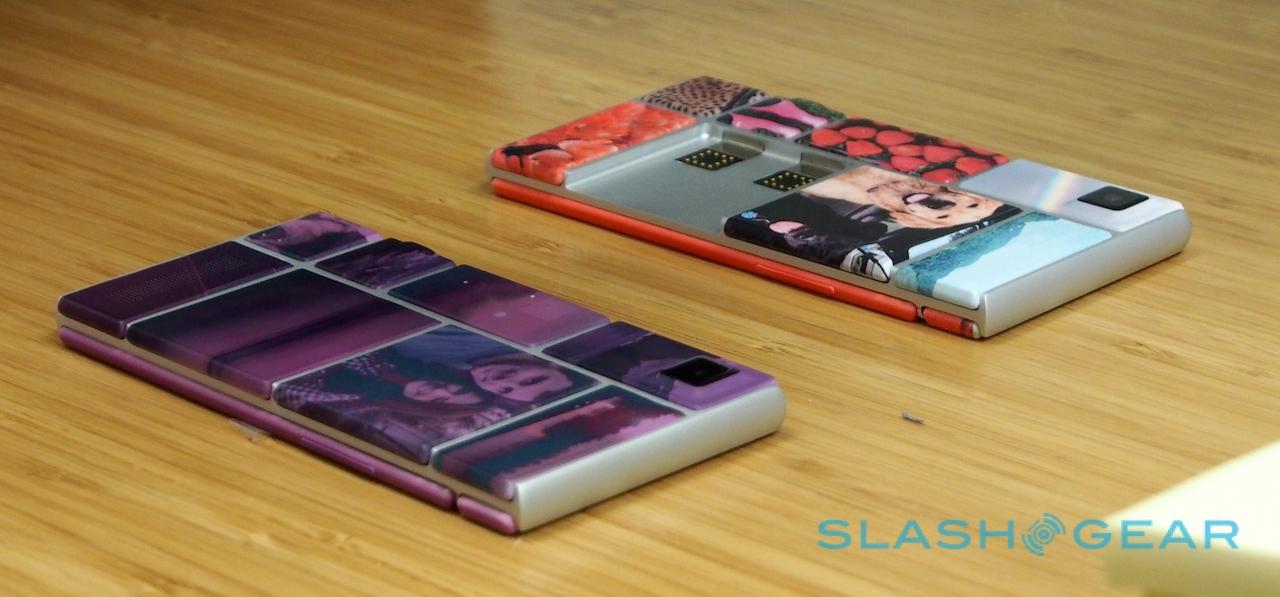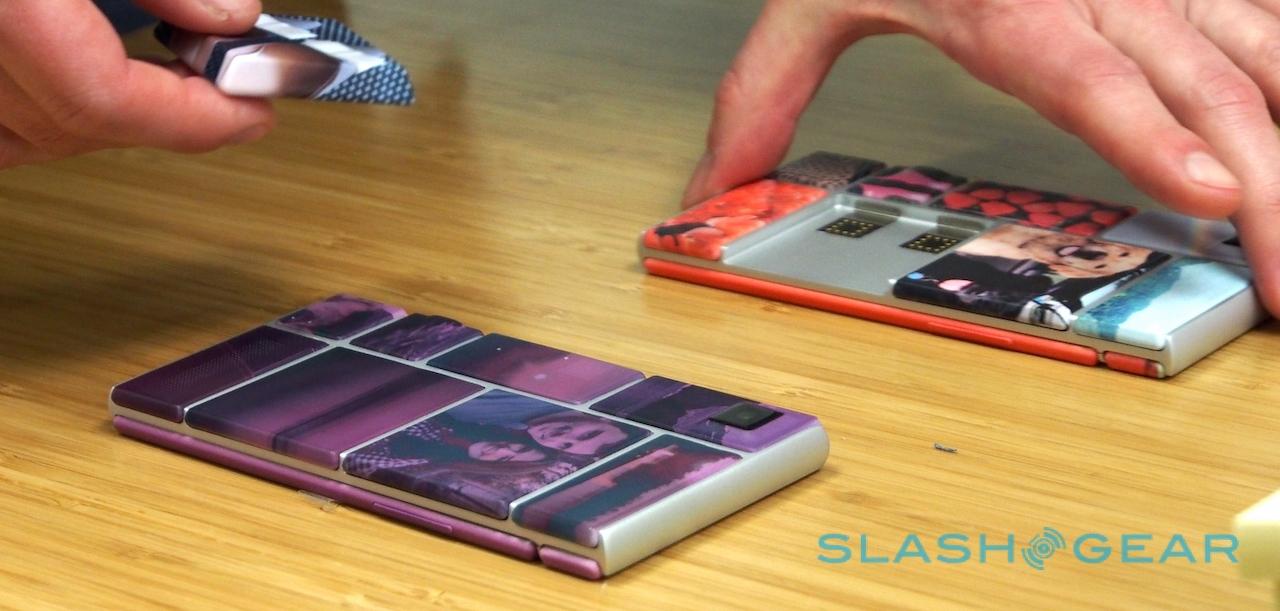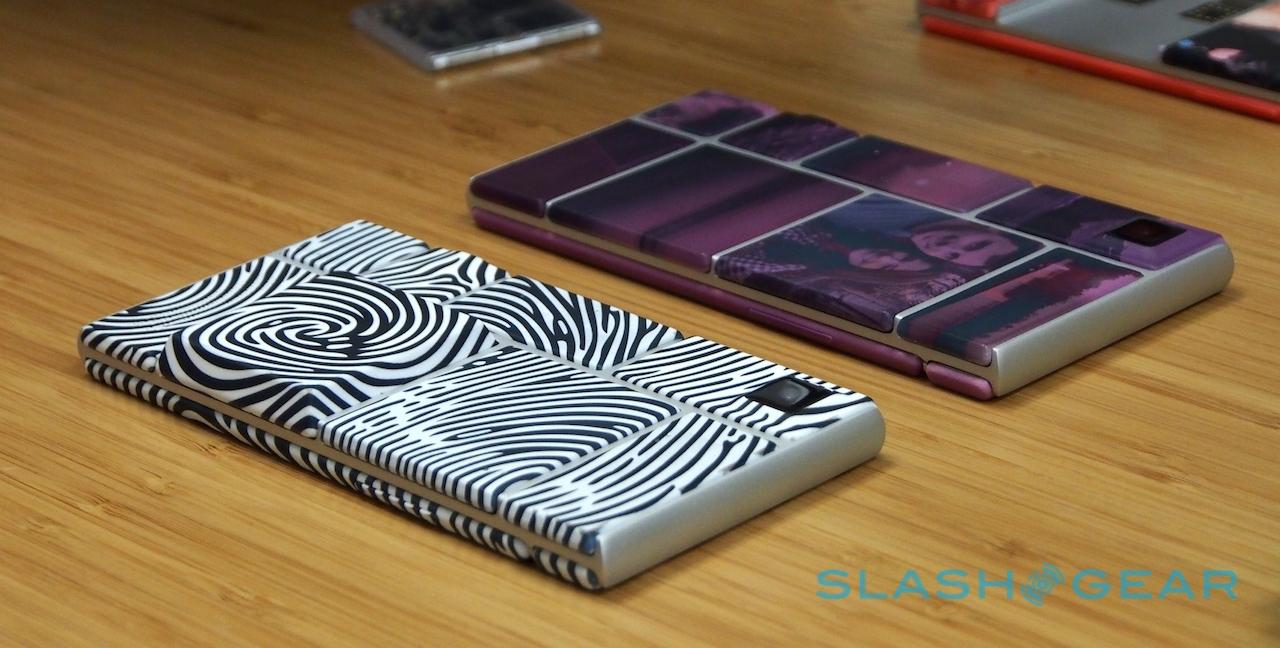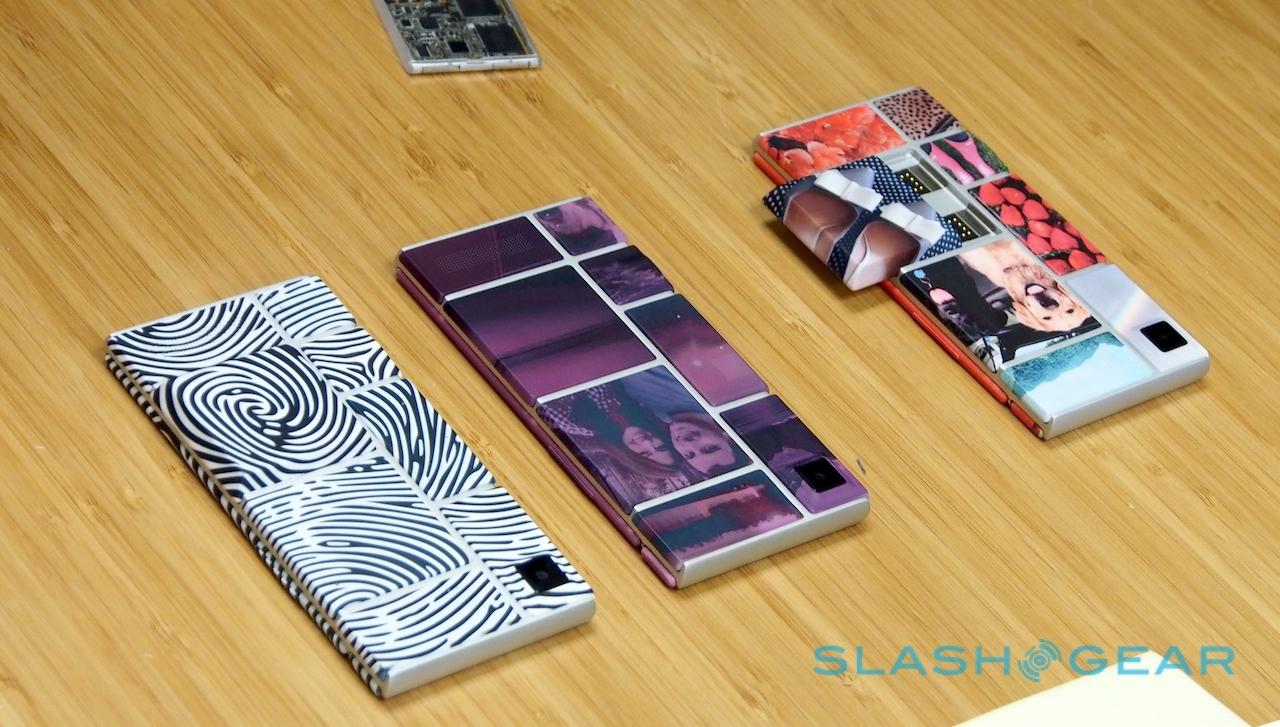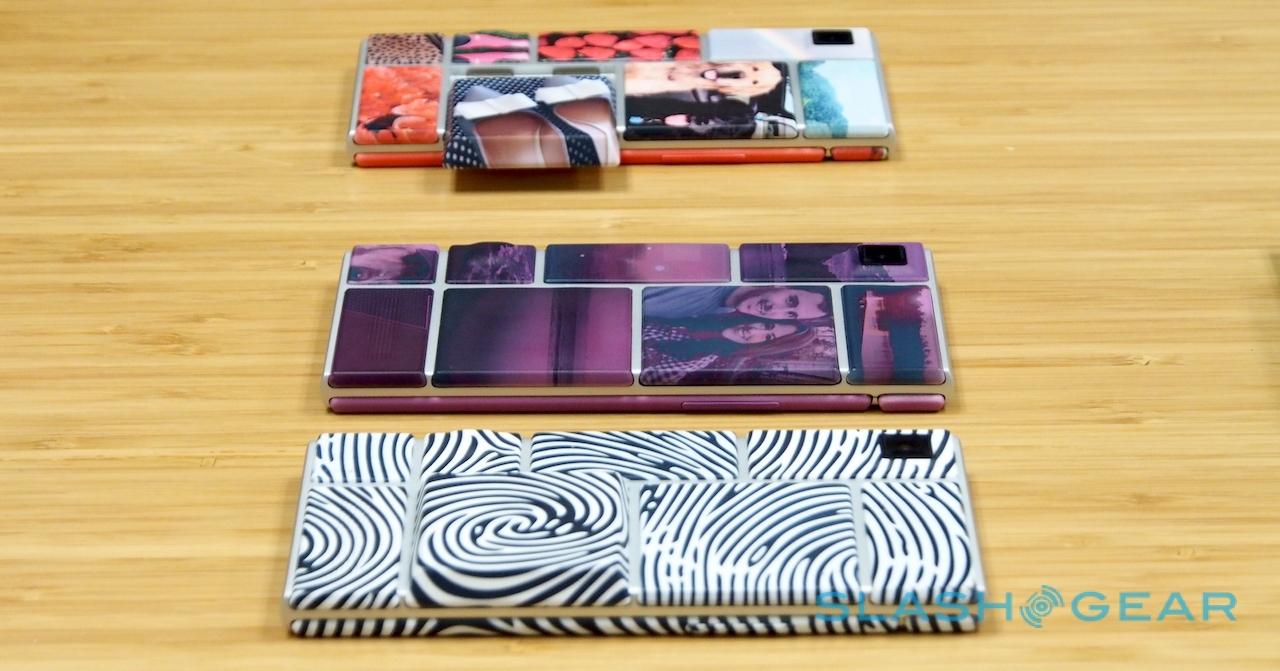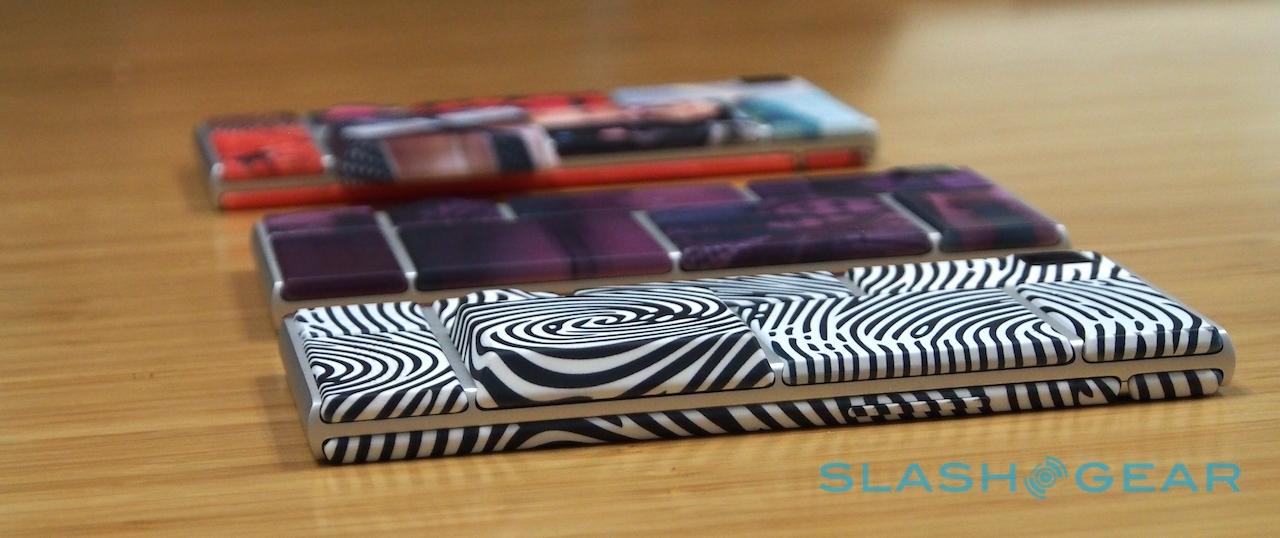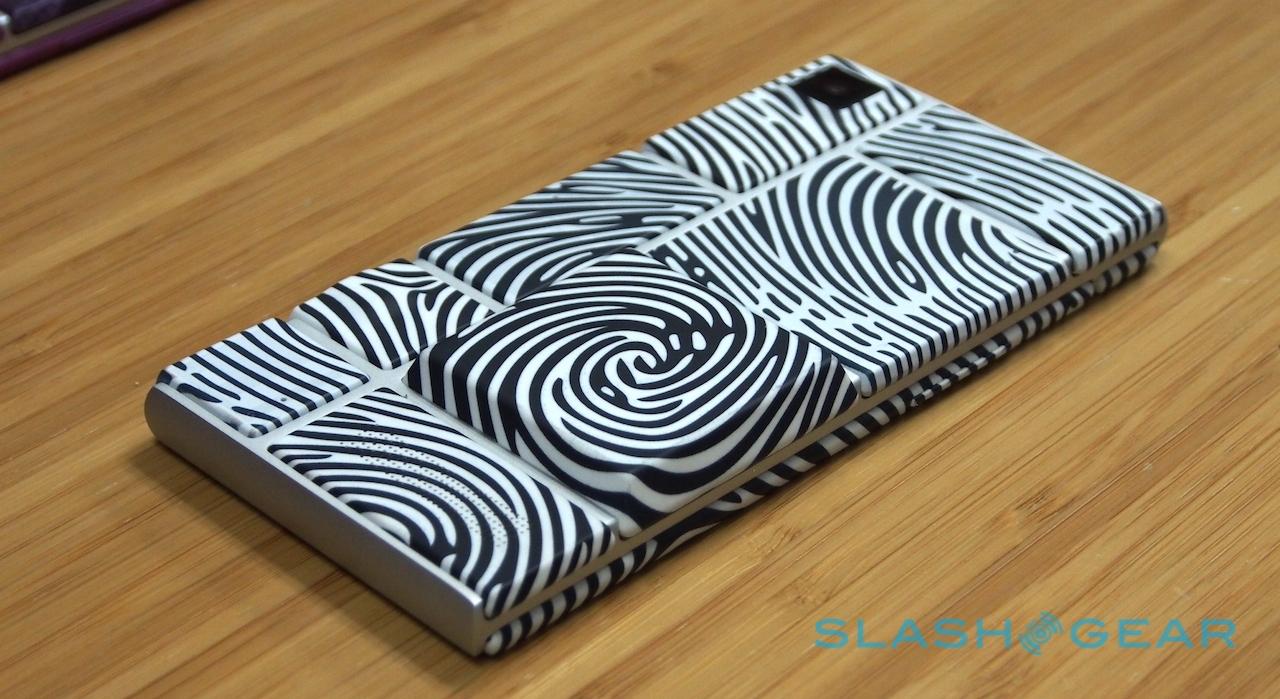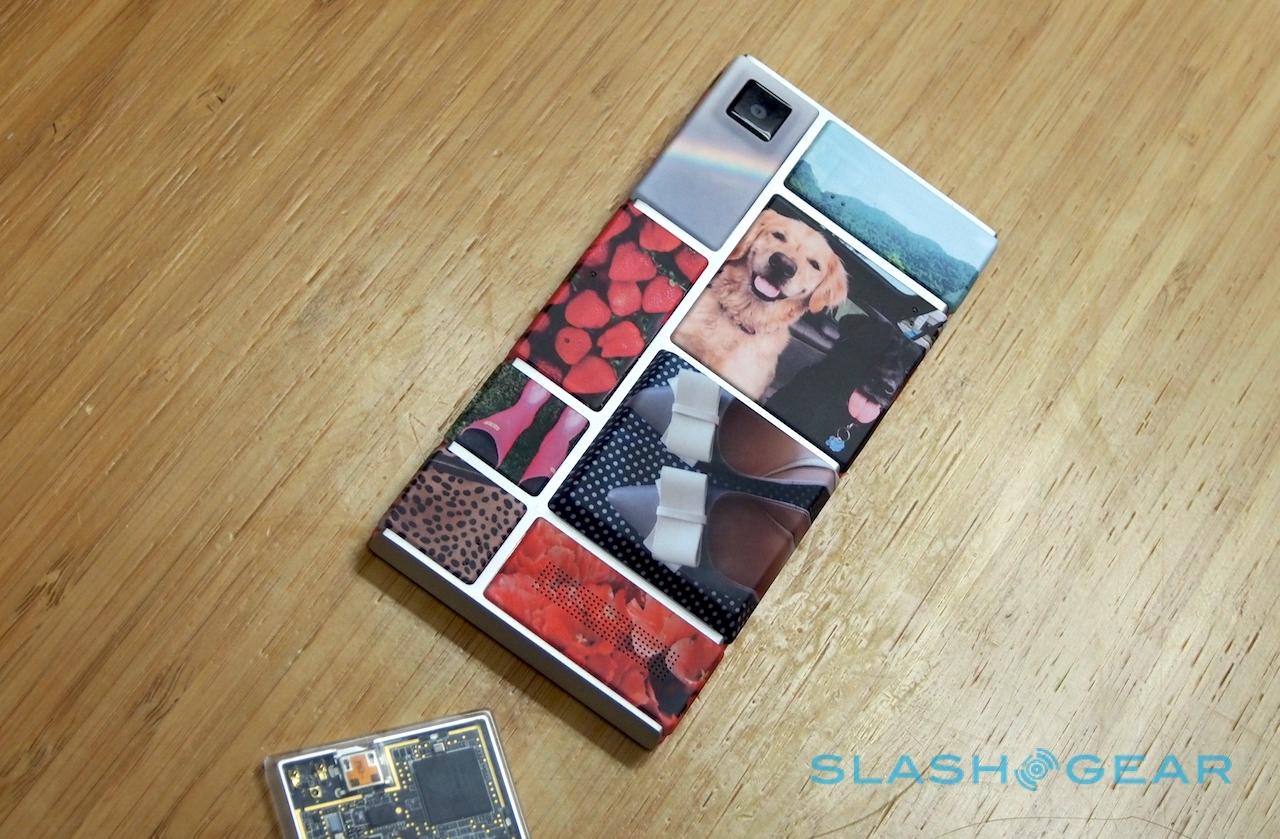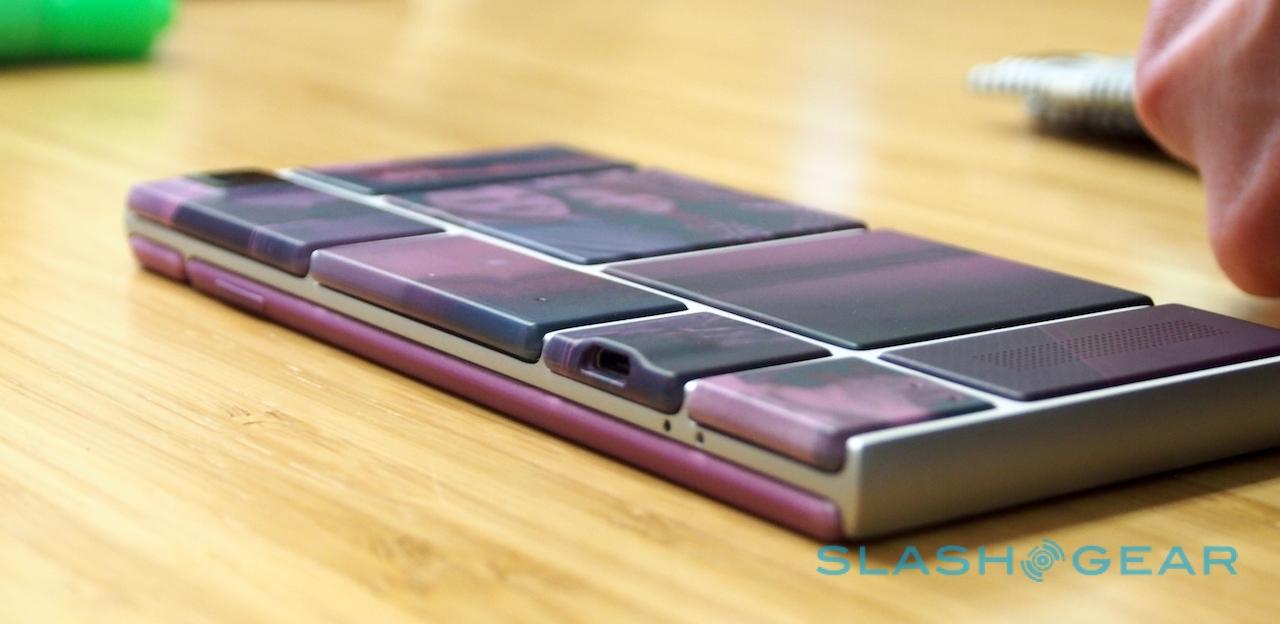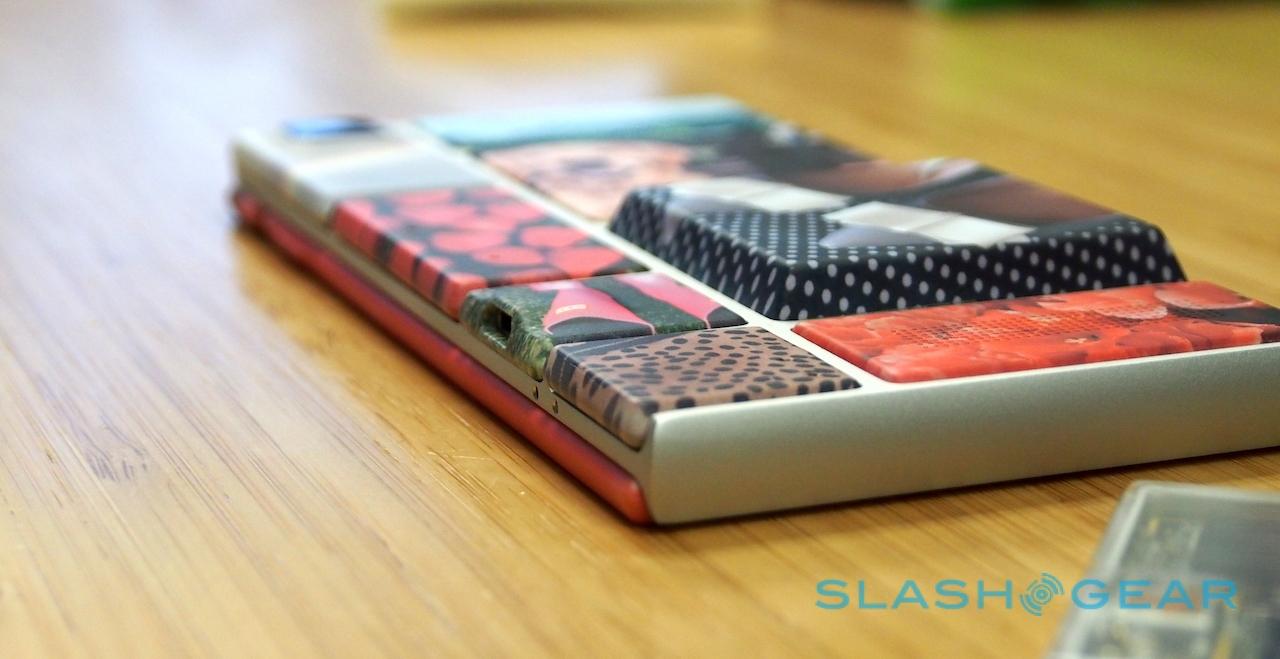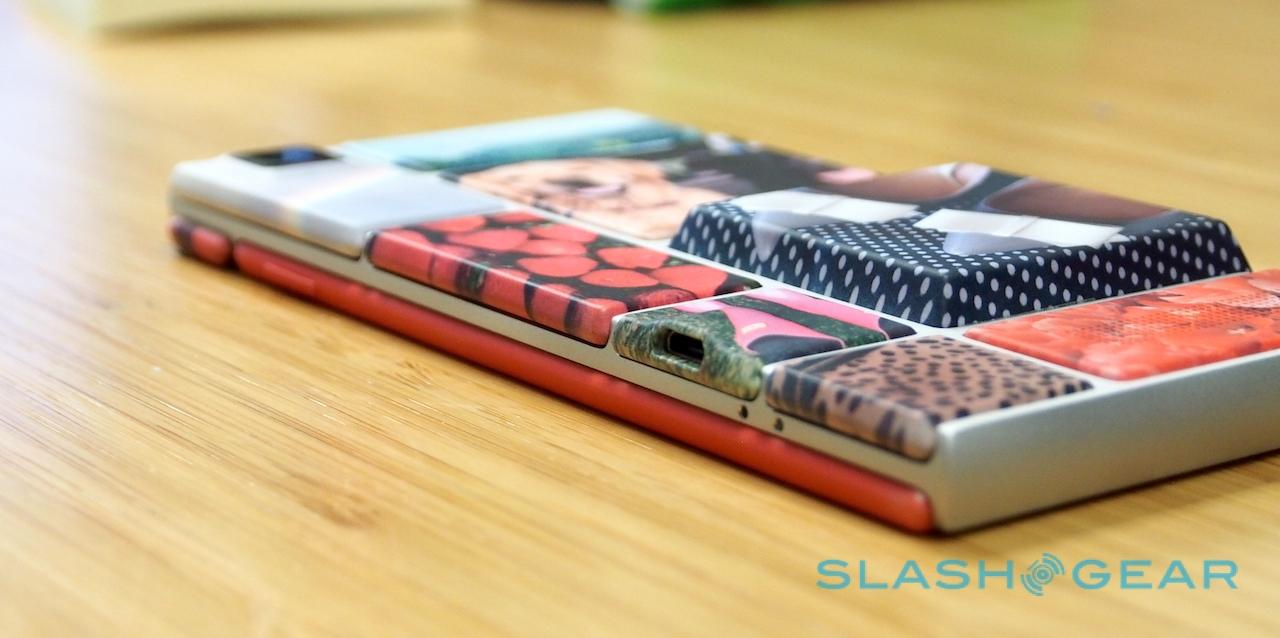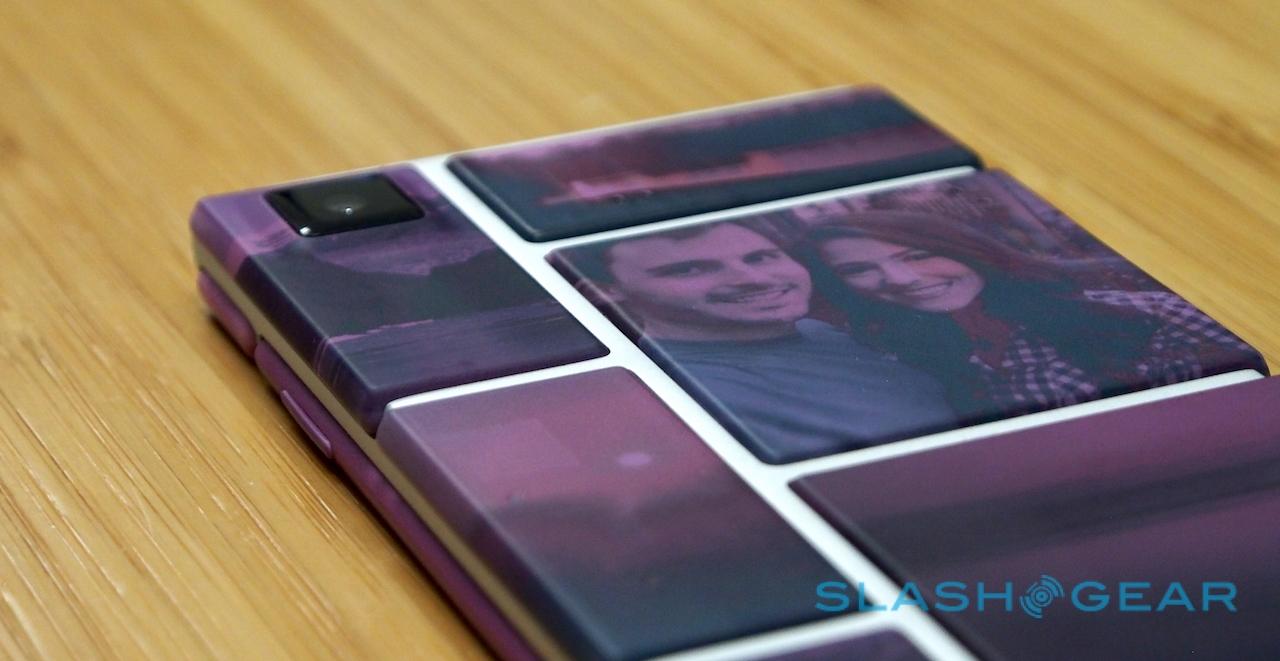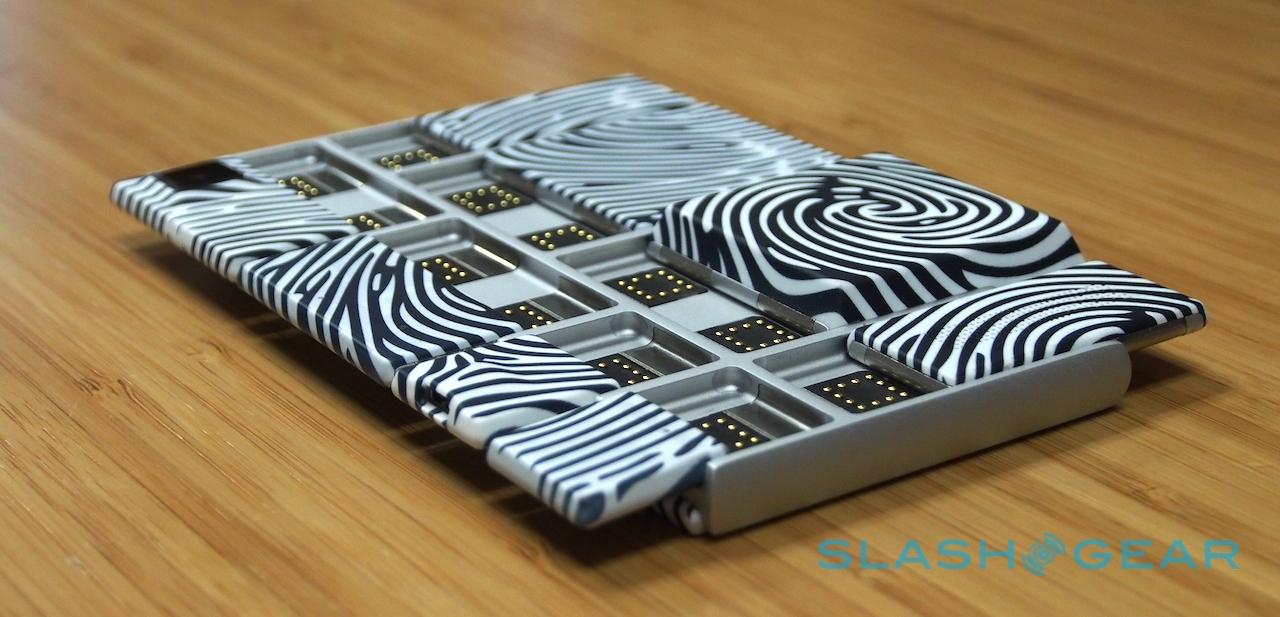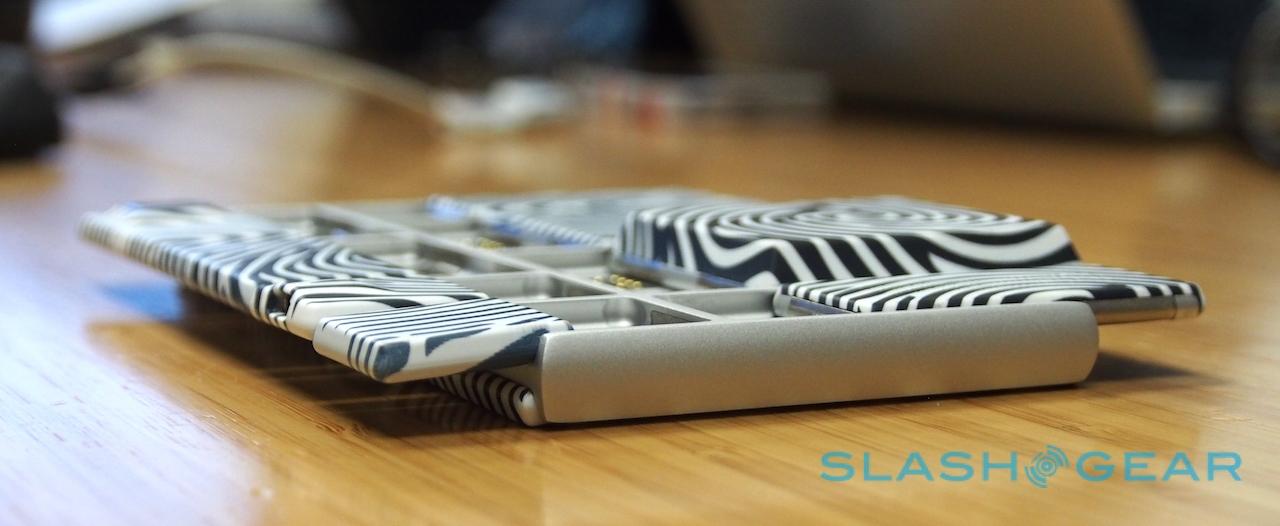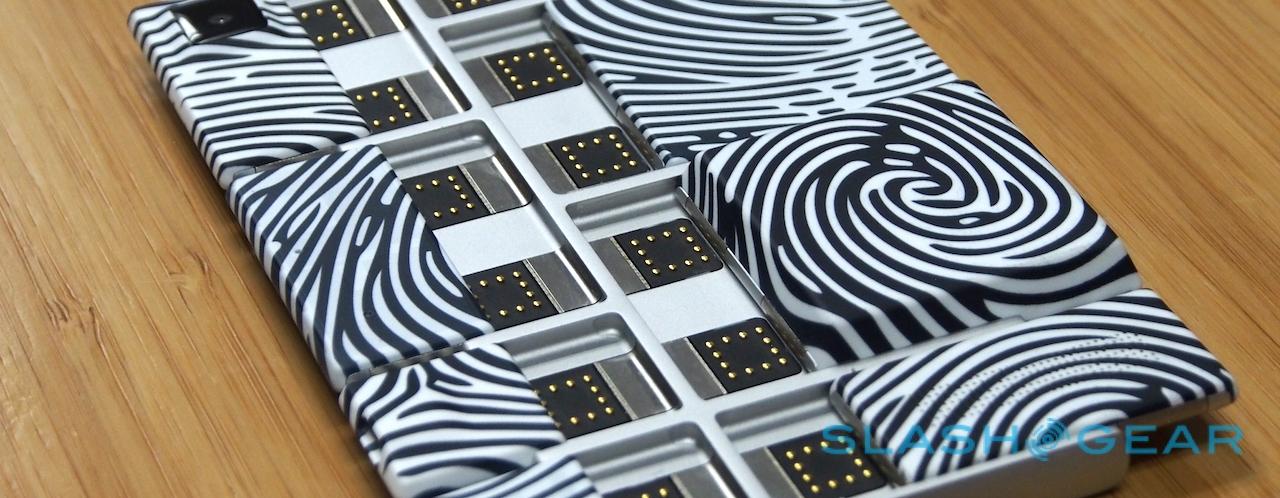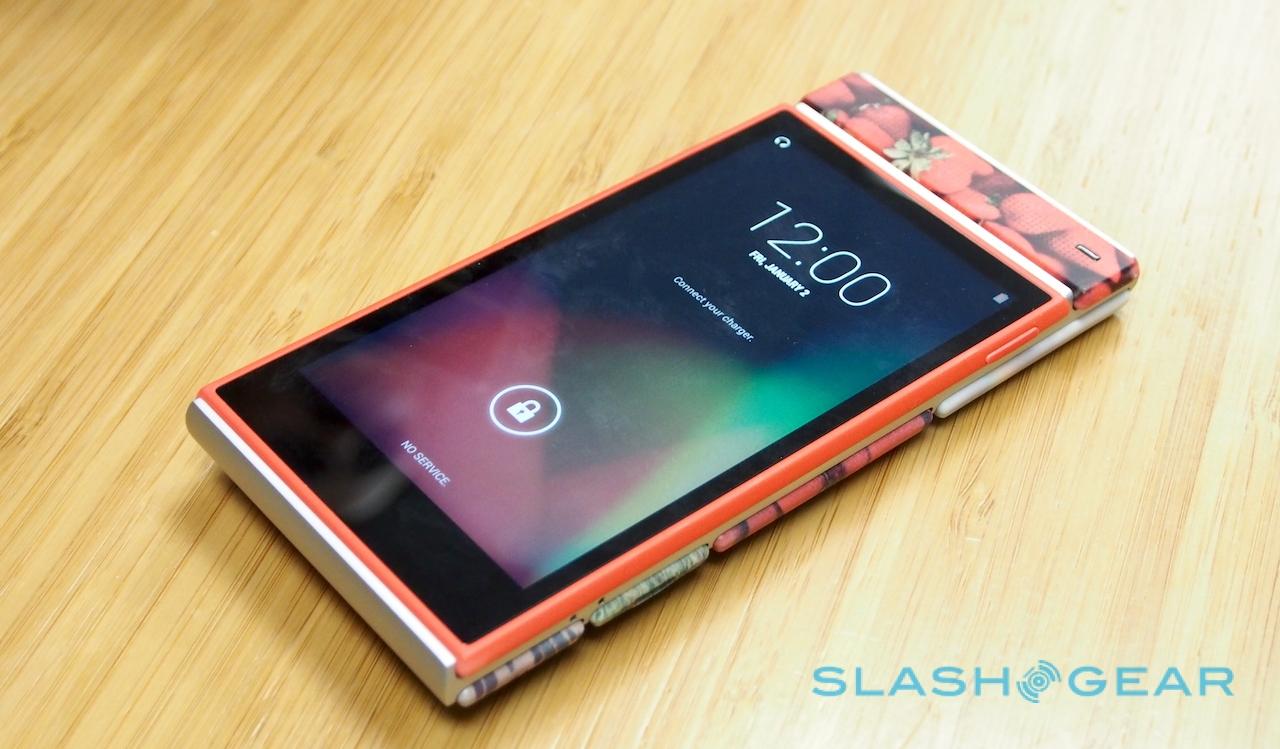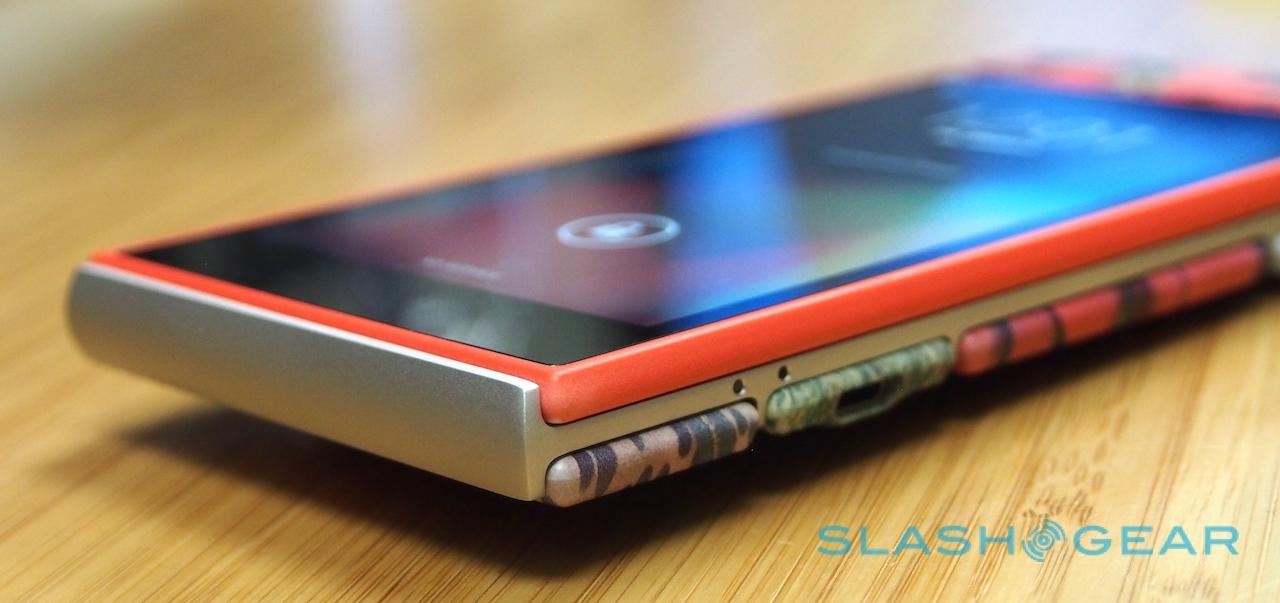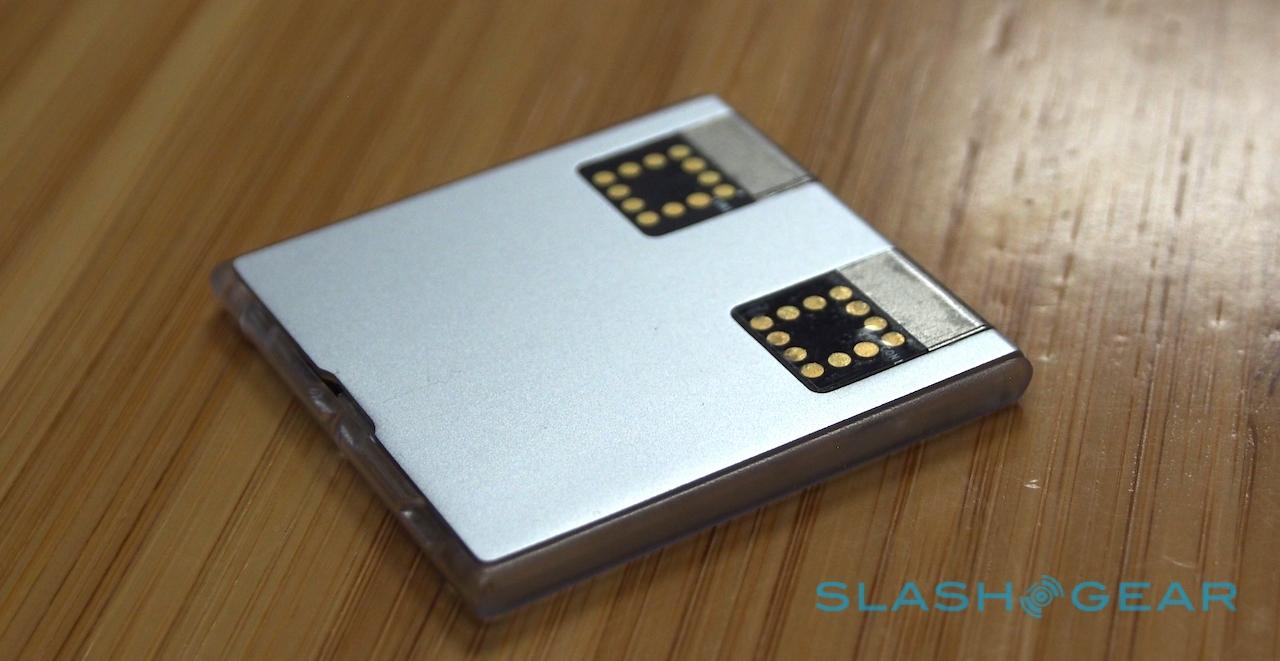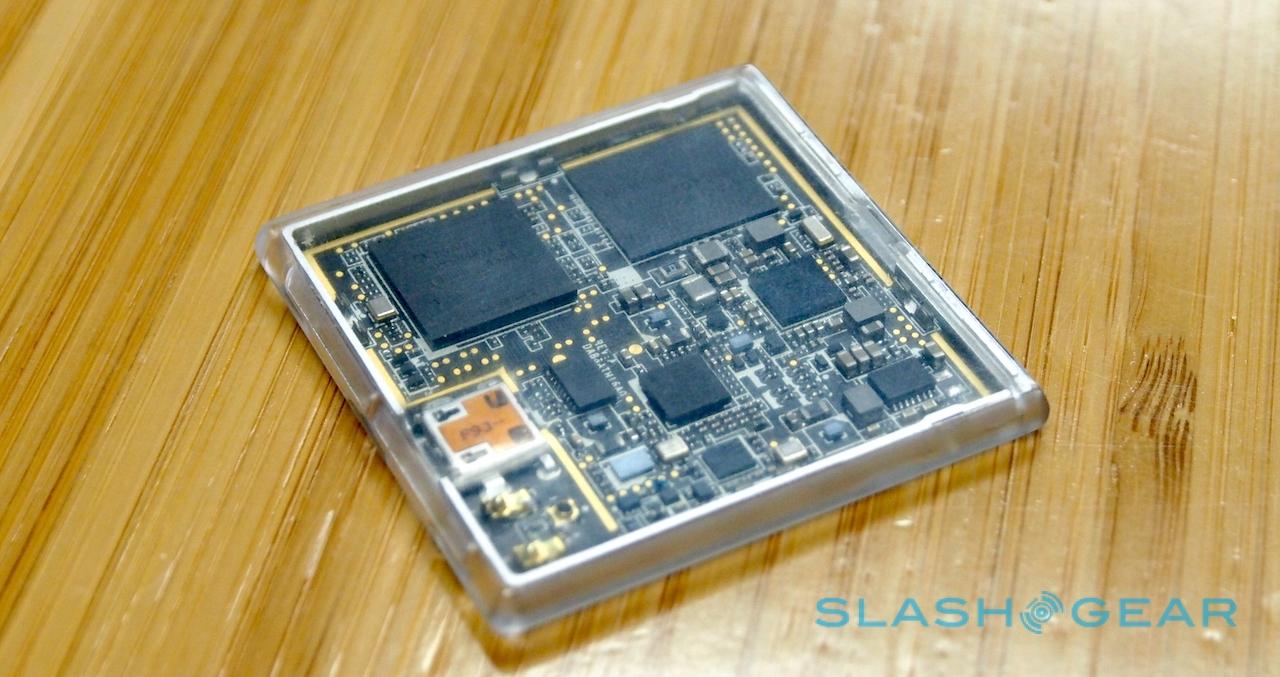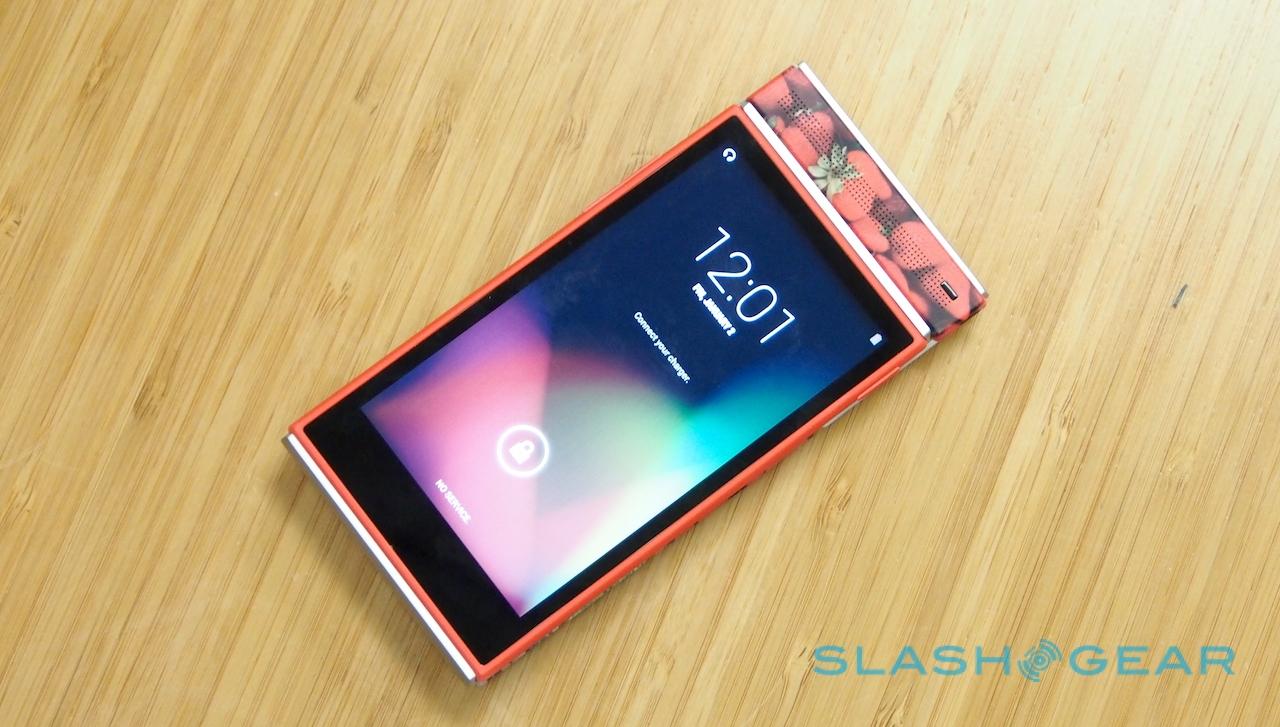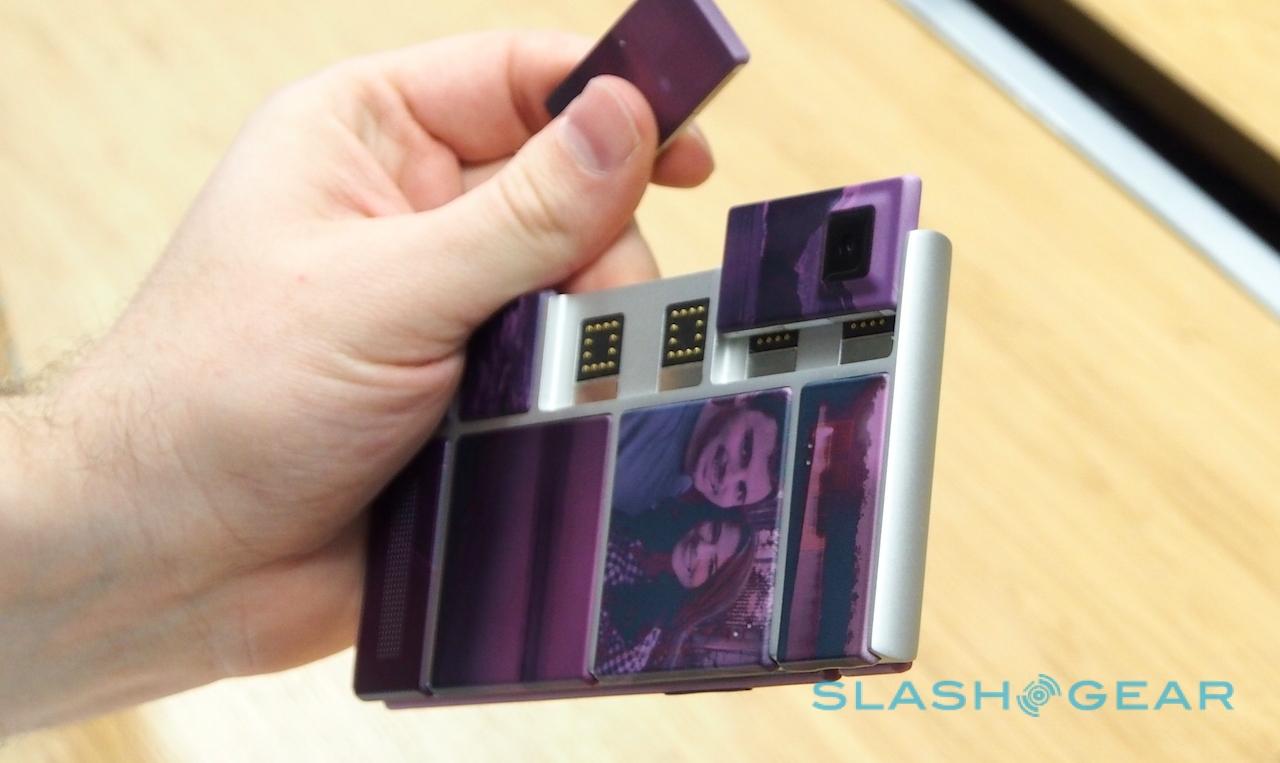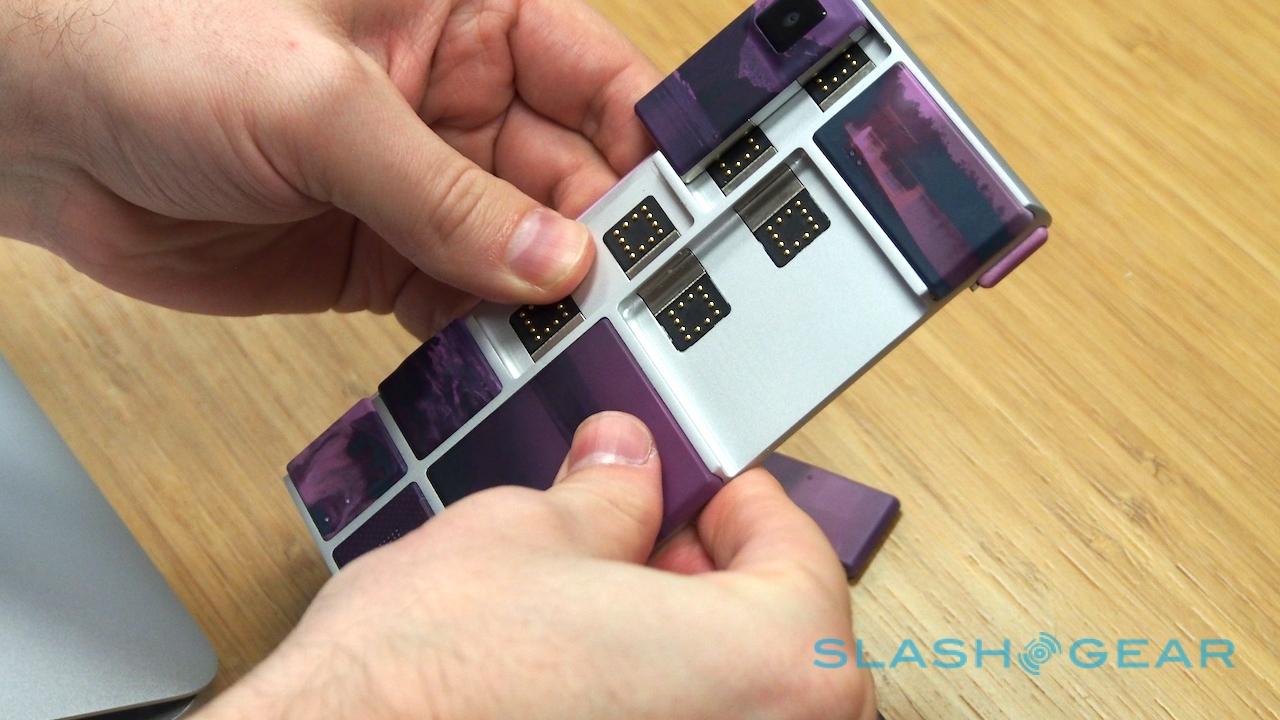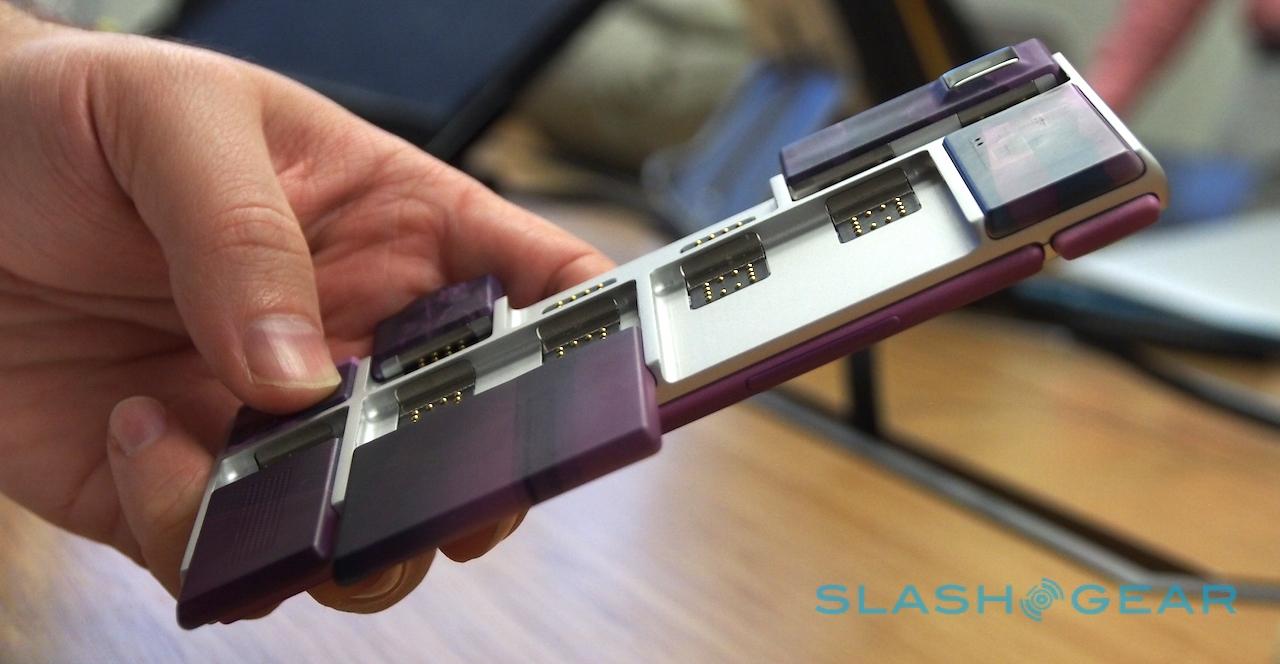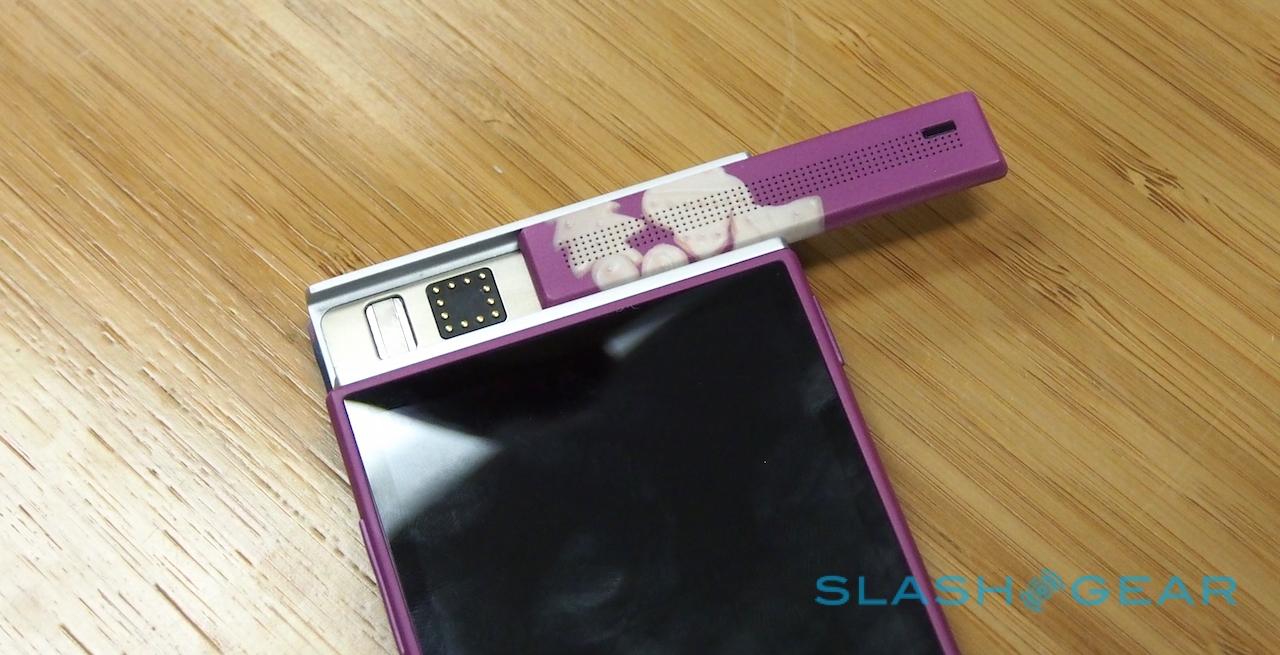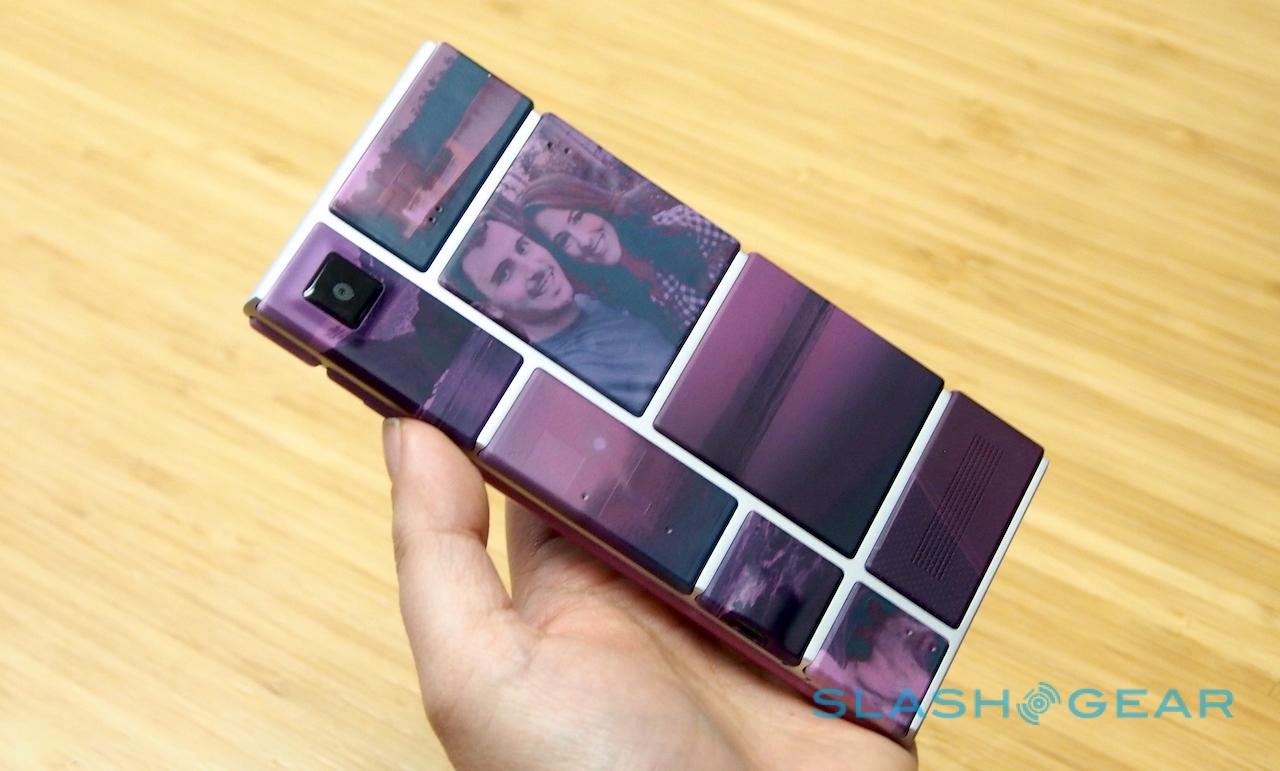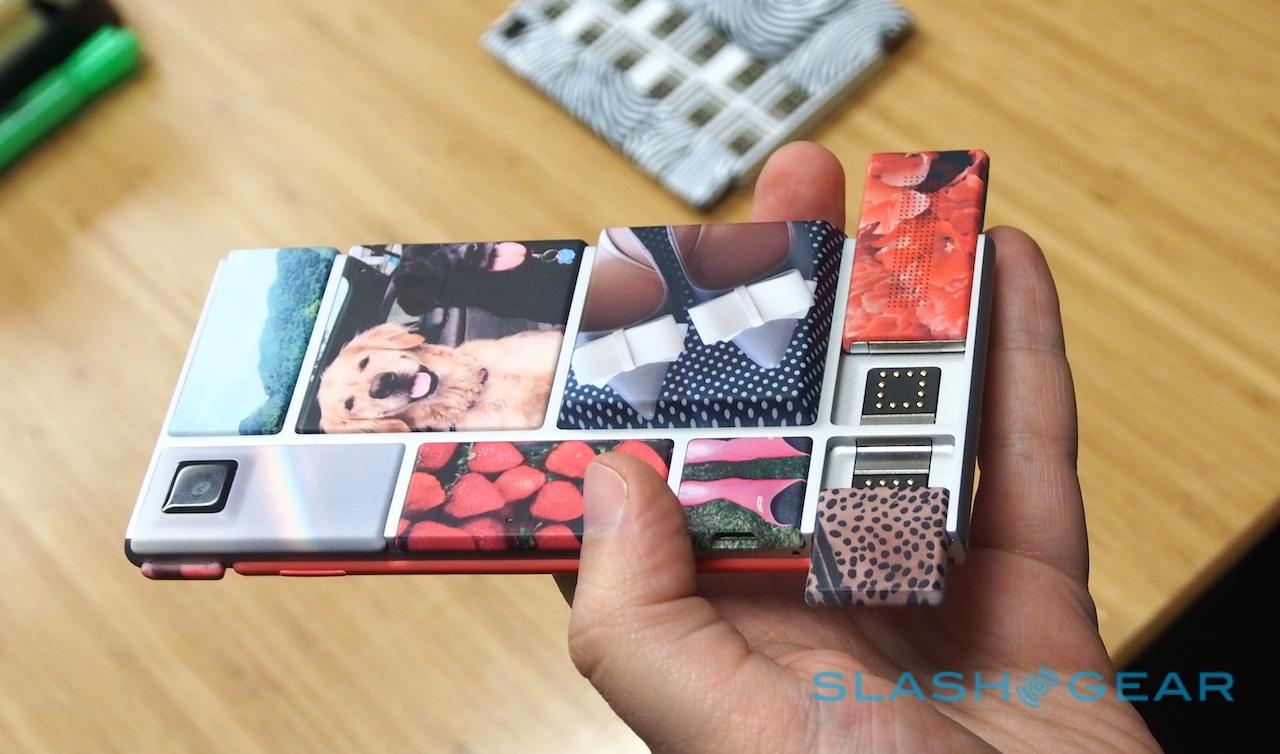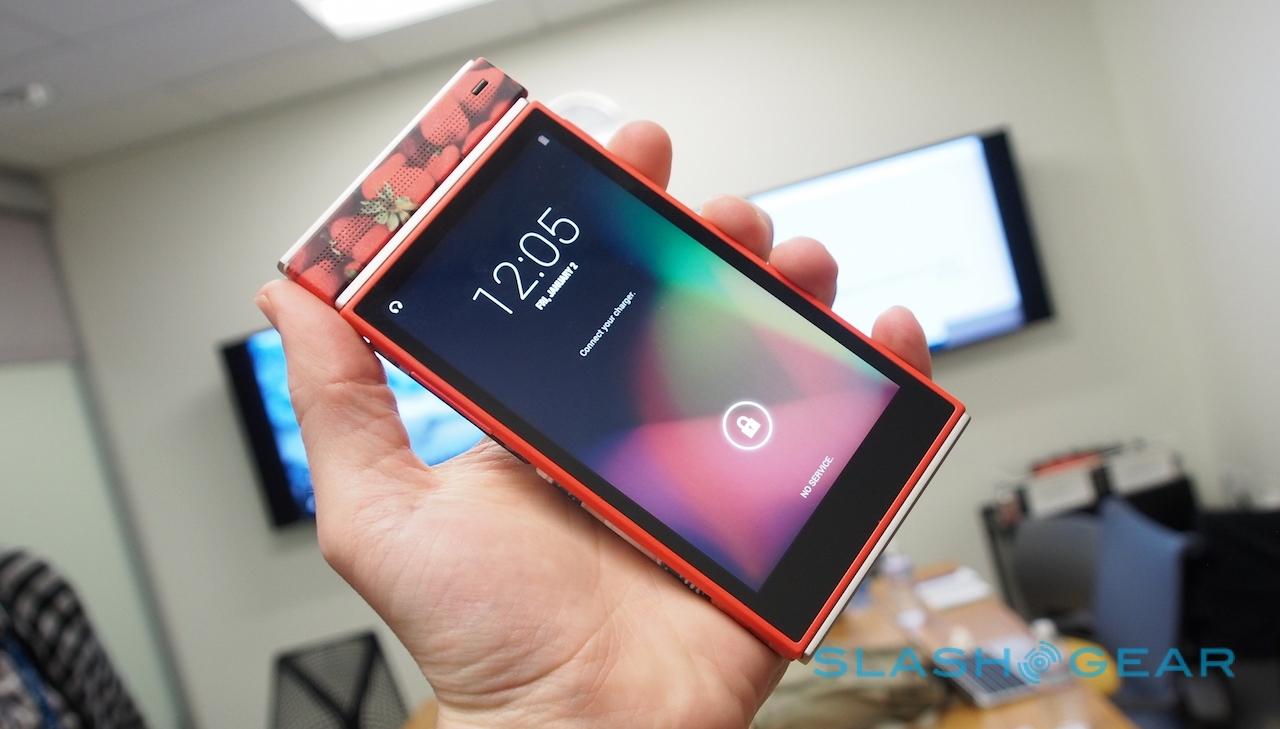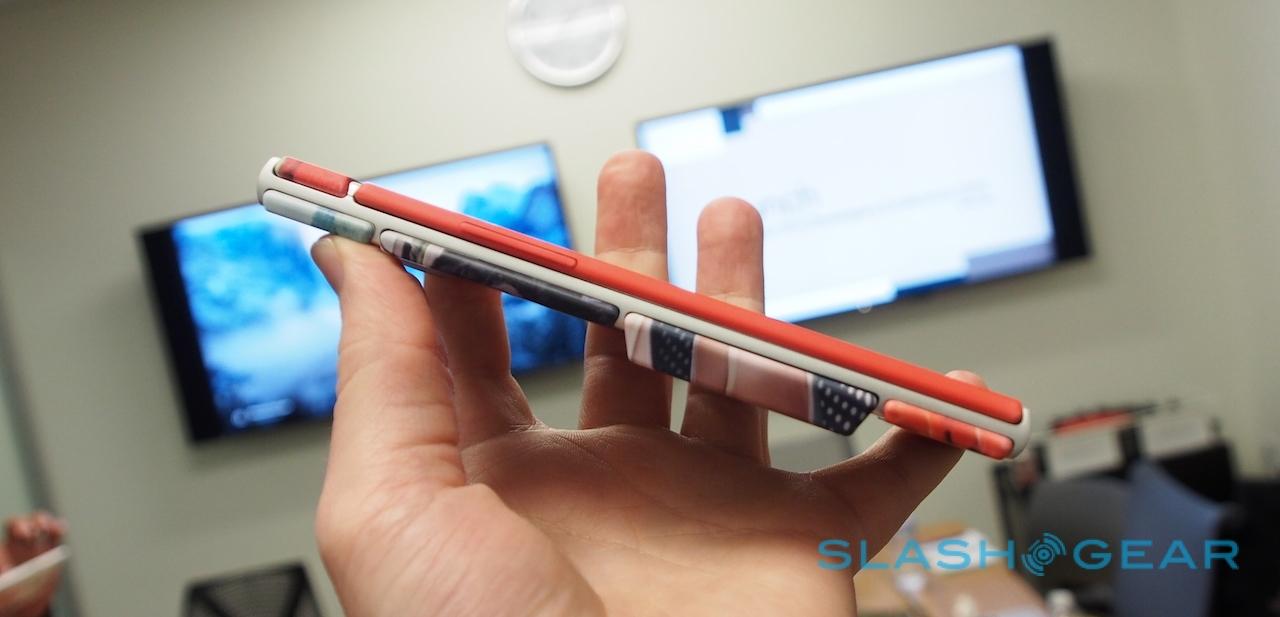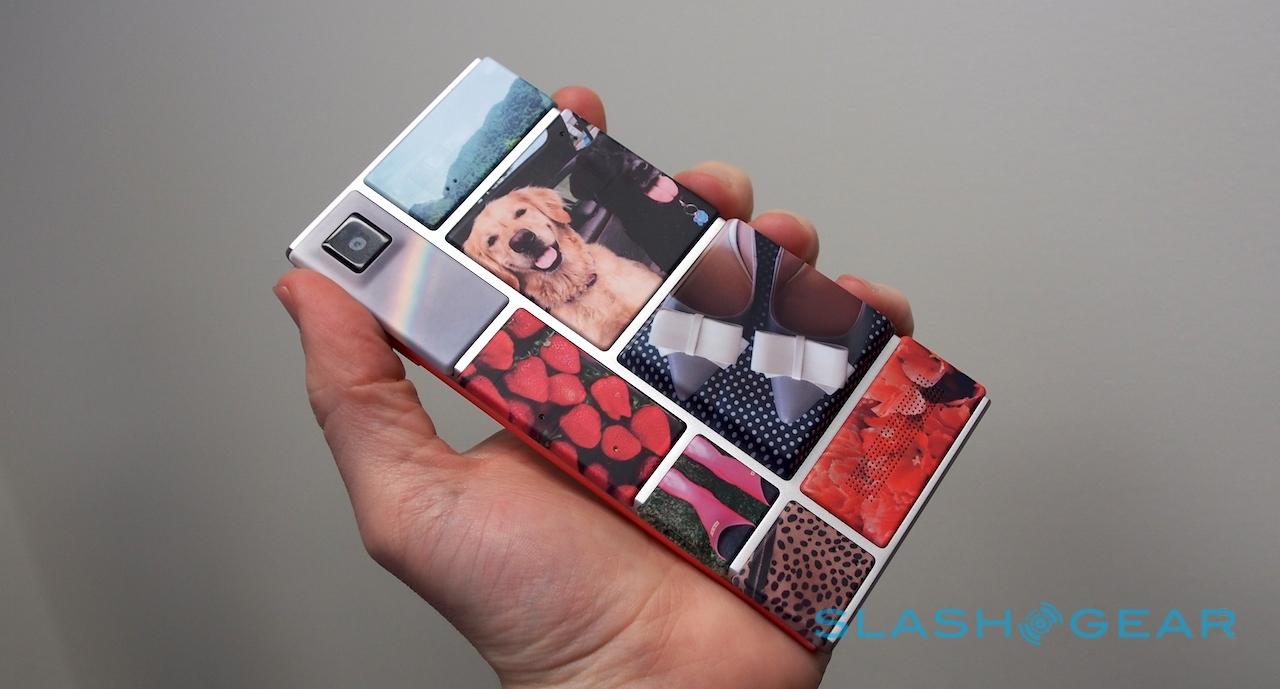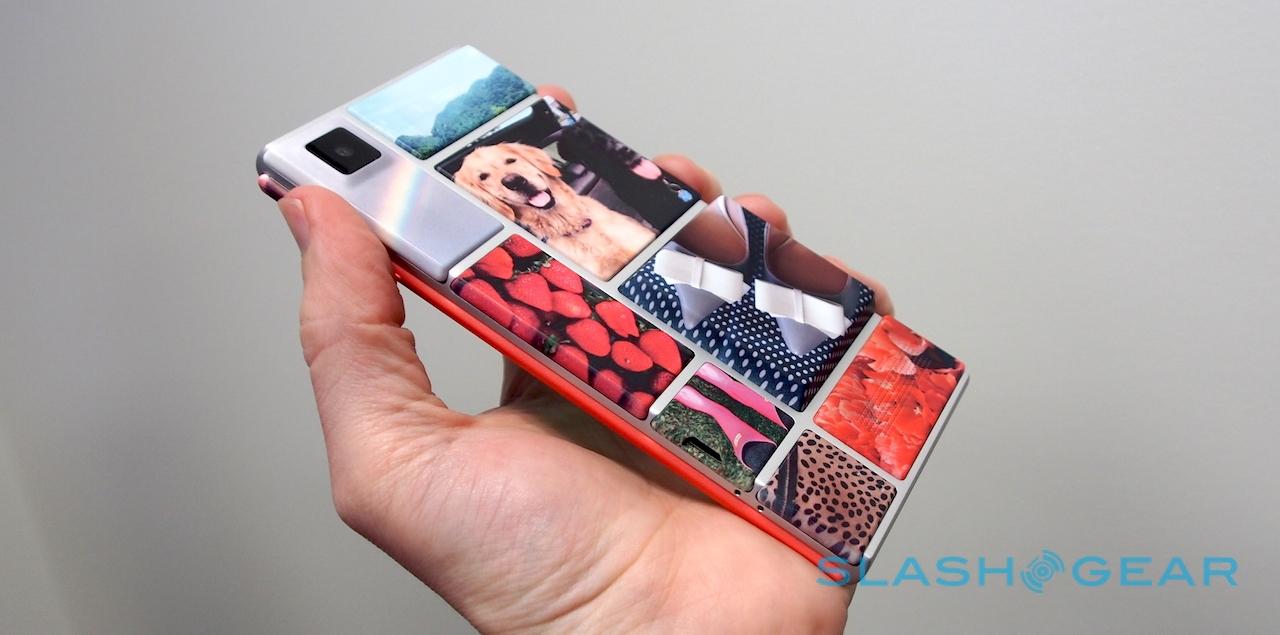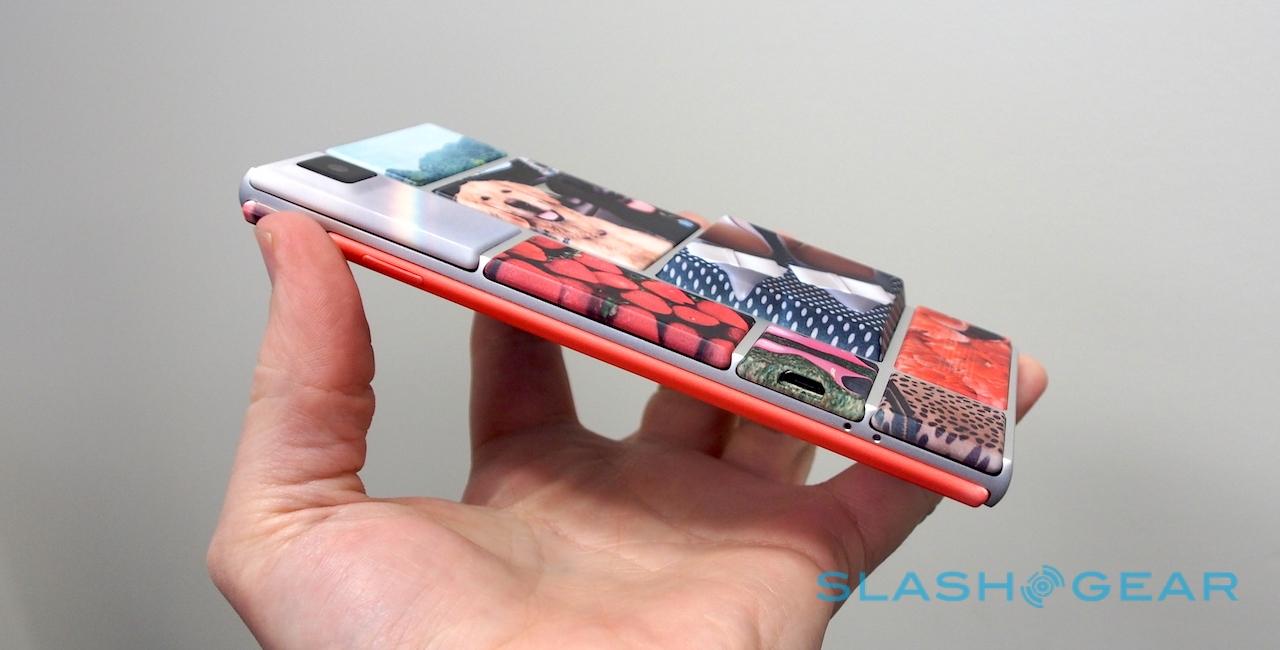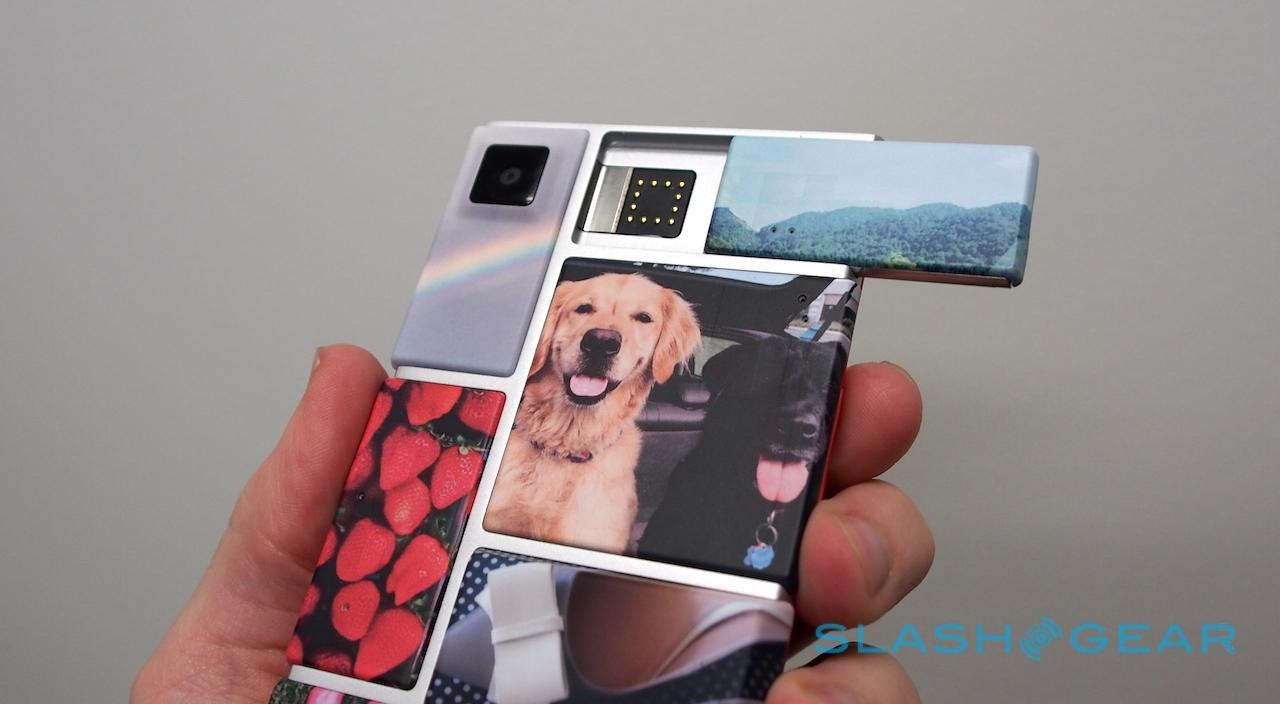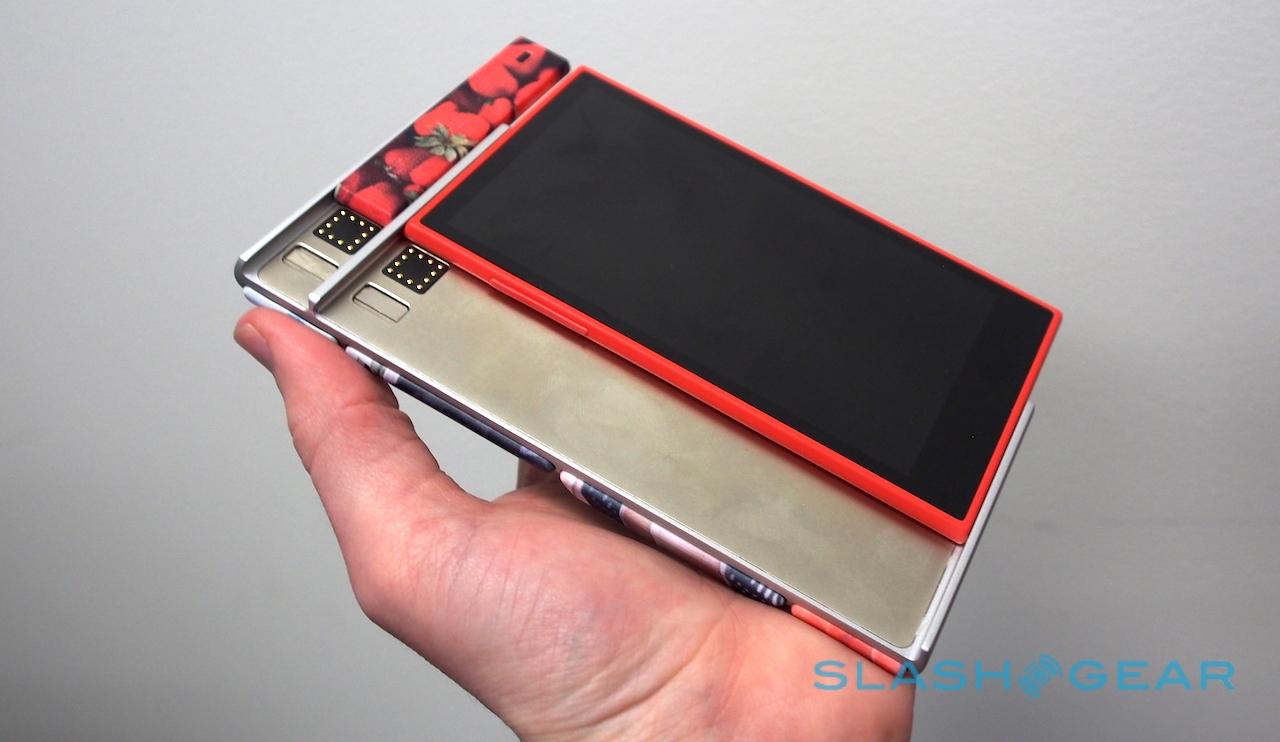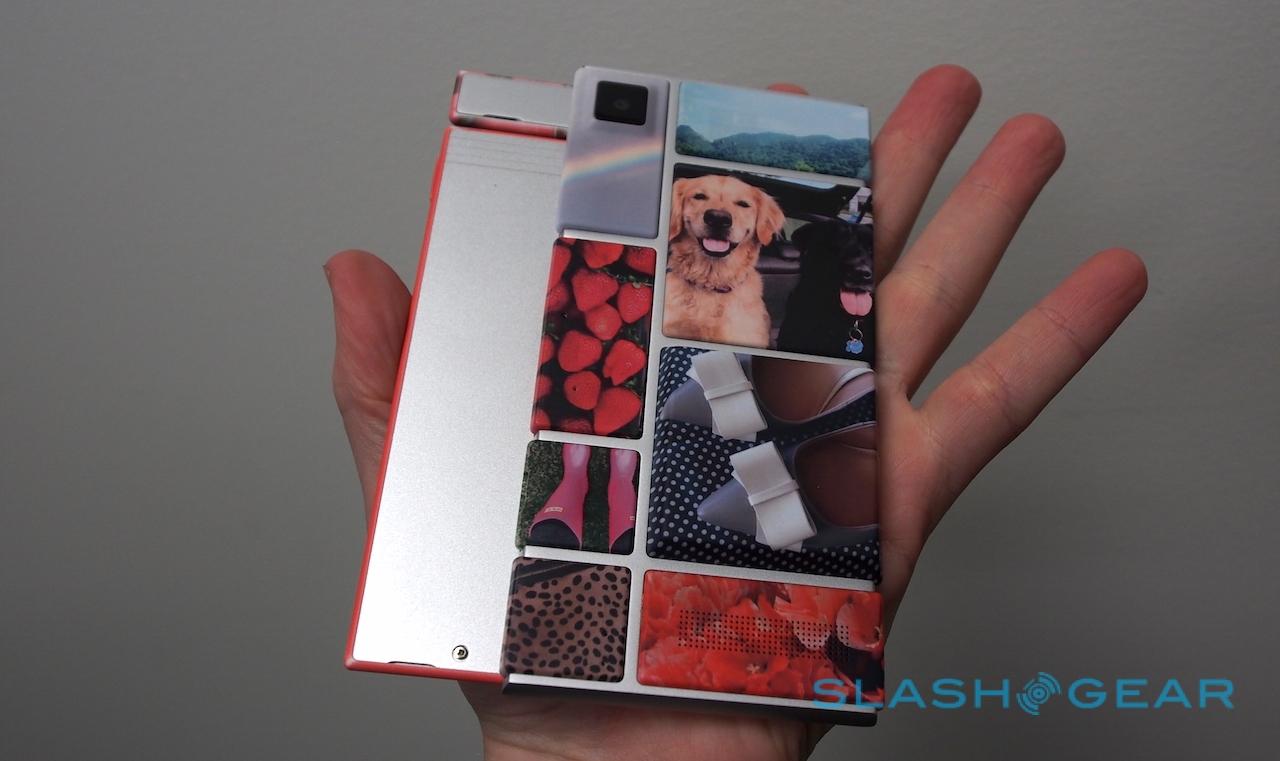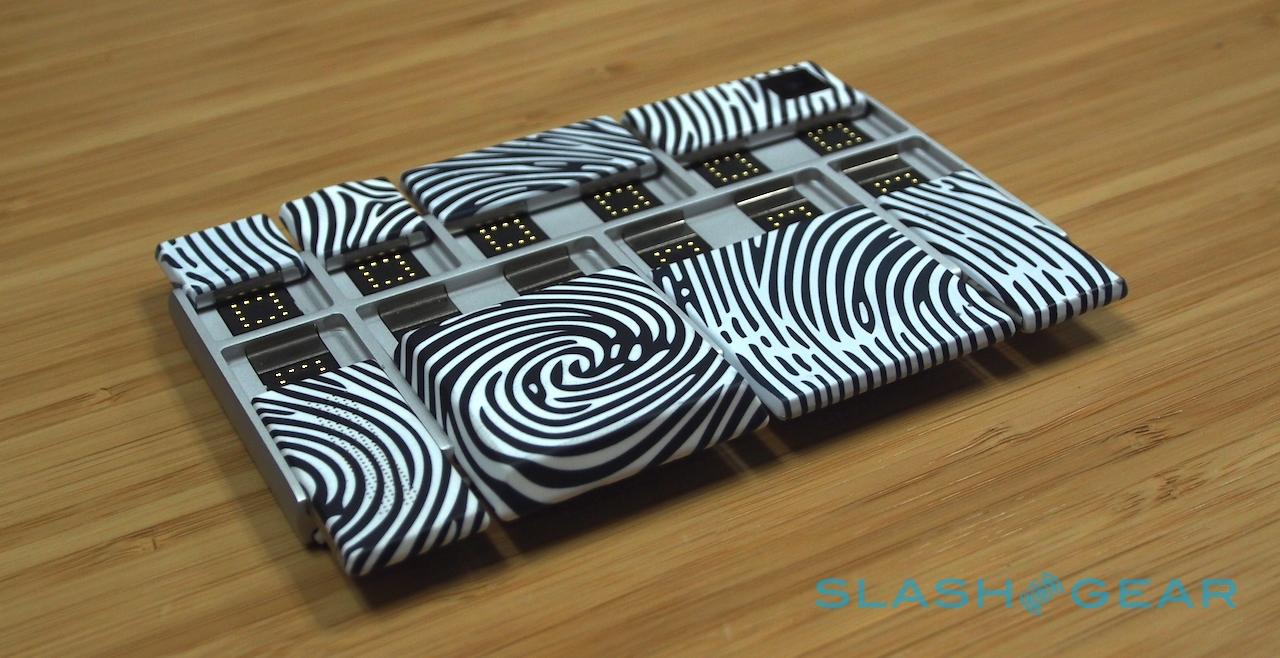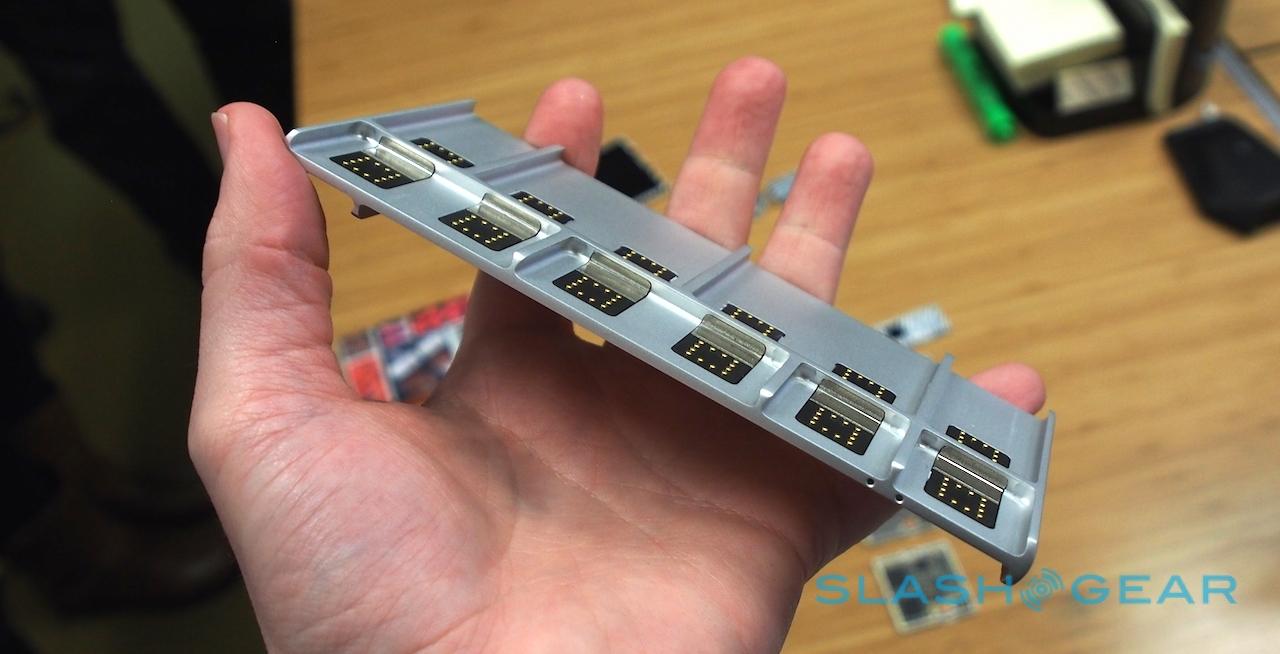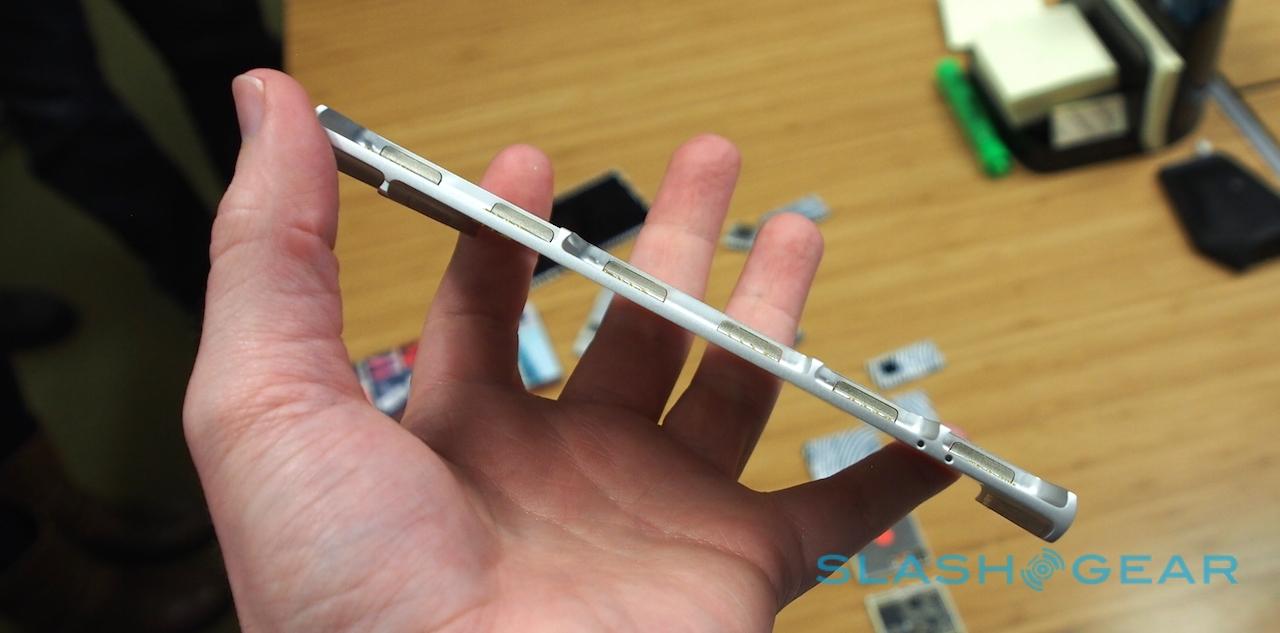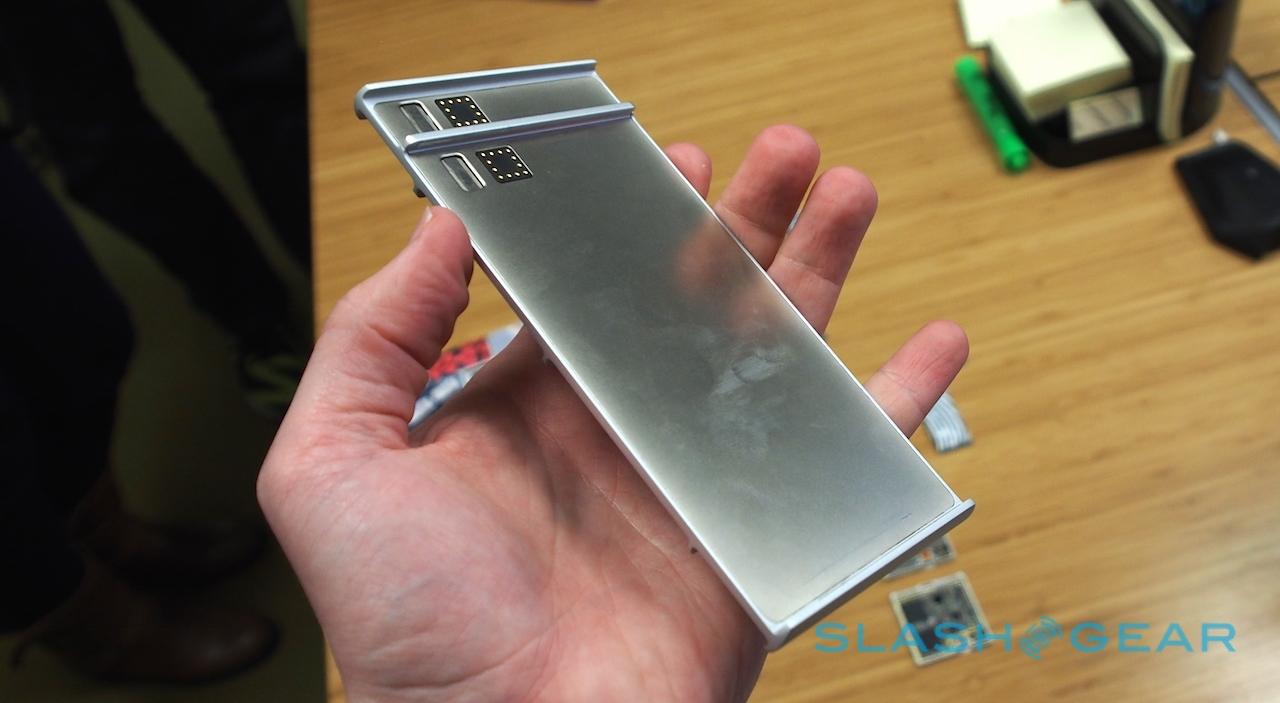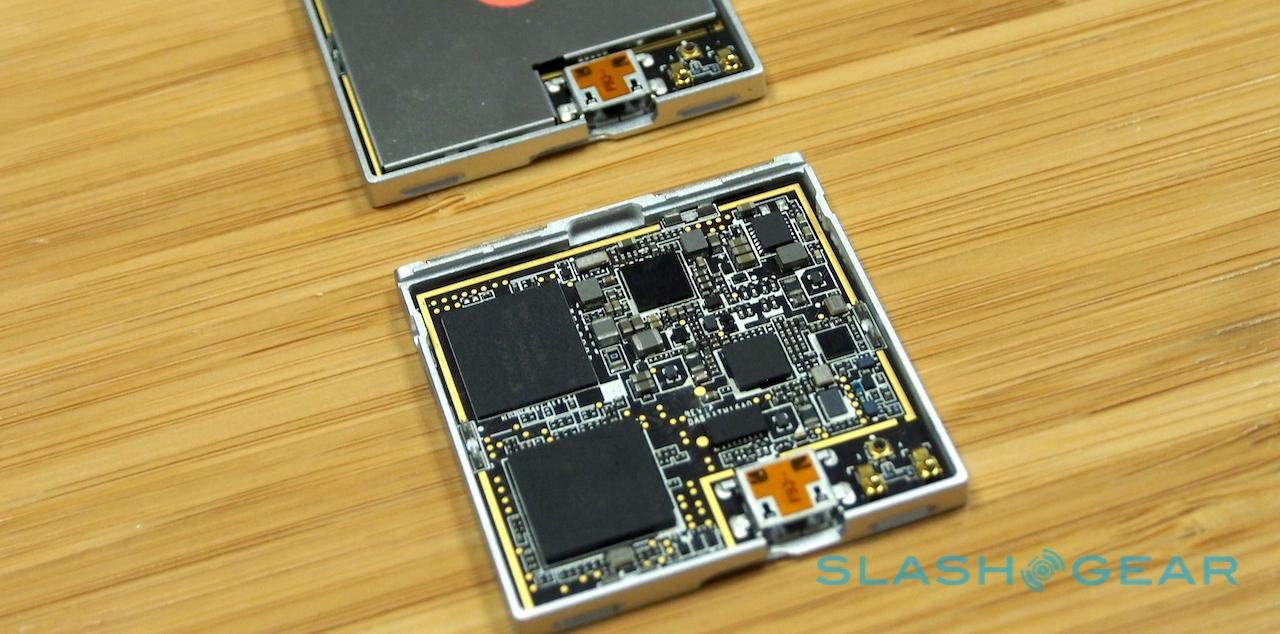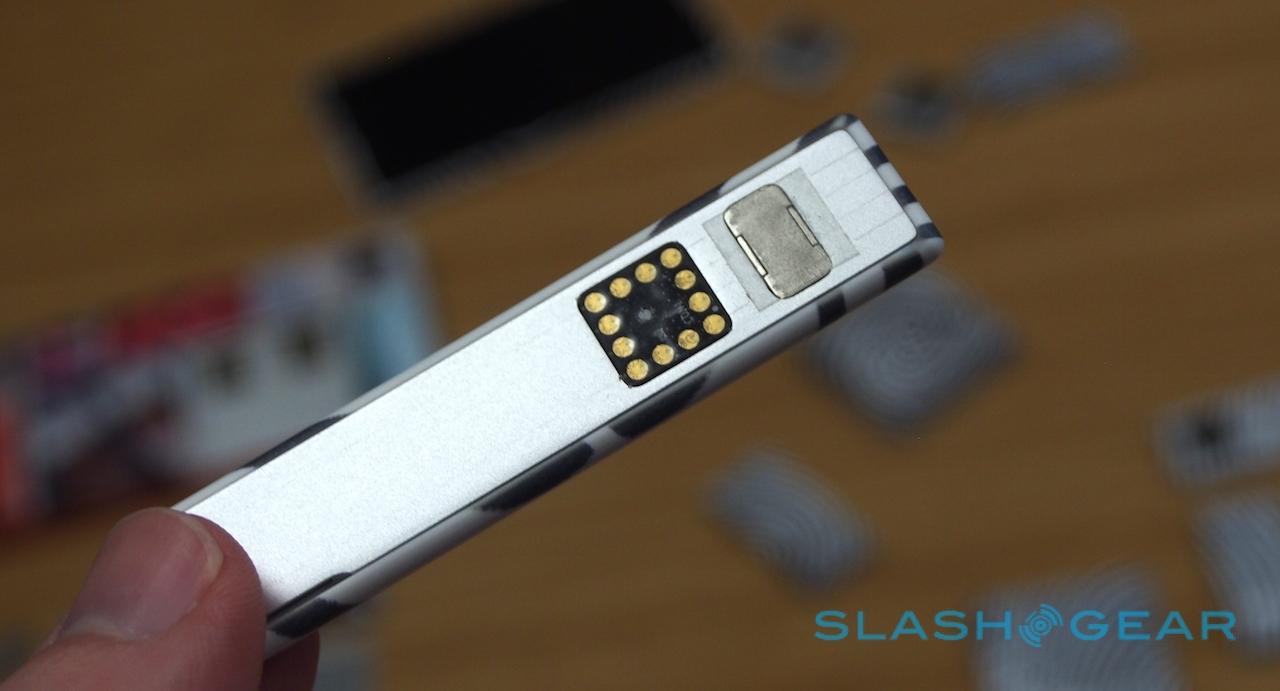Project Ara Hands-On: Mauling The Modular Mobile
Whether you agree that modular phones are the future of mobile or otherwise, you can't argue that Google's Project Ara isn't intriguing, and so I was keen to get my hands on the highly flexible handset. Google had three Spiral 2 devices to show at its second Ara Developer Event in Mountain View today, and while time and functionality was limited, it was a good opportunity to see how well the idea of piecemeal feature blocks works in a practical sense. Turns out, there's good and bad as you might expect at this pre-production stage. Read on for some first-impressions.
There's something highly tactile about the hardware, at least in its constructed state. Spiral 2 uses physical pin contacts, and the bays themselves are a tight fit: you have to slide each block in from the side – you can't just drop it in from the top – and apply some pressure to get it into the right place.
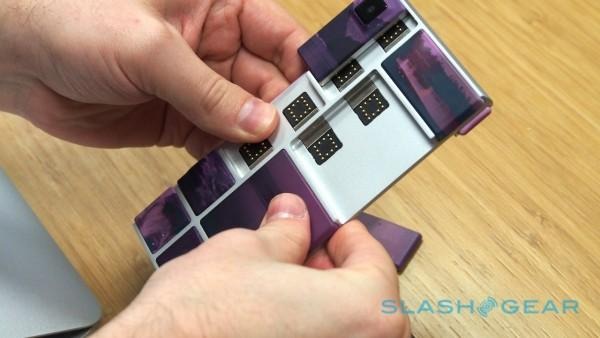
The converse is true for when you want to remove or switch around each module. I tried doing it with my thumb, holding the phone single-handed, but it's hard going getting sufficient traction to slide each tightly-gripped piece out.
I can imagine it improving for Spiral 3, however, when Google switches to its electro-permanent magnets. Then, I can imagine it might feel a little like a magnetic desk toy, the way the modules slot in and out; the slight resistance your fingers feel, before each block slides away.
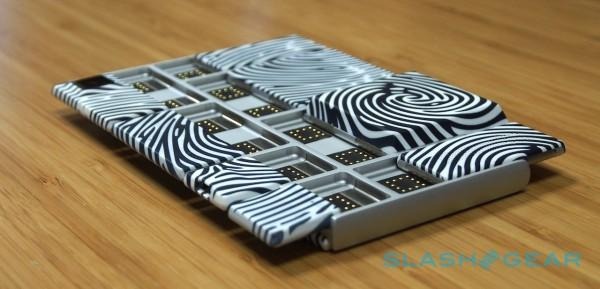
It's not a small phone, mind. Google said it had done its level best to keep the functional Spiral 2 endo skeleton as thin as the non-functional design mock-up, and the two are certainly close, but there's always going to be a compromise on bulk when you separately enclose each component.
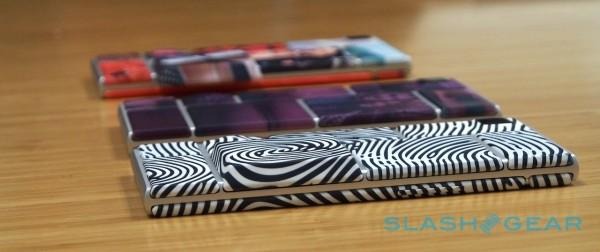
That isn't in and of itself a deal-breaker, but it does put Ara at close to phablet size, without – in current form – the specs to match. A 720p display, for instance, pales in comparison to what we've seen Samsung and LG do in recent phones.
Neither is it going to take on any of the current traditional phone flagships for things like camera. Toshiba confirmed during the developer event that it's working on a 13-megapixel camera, but right now there's a removable 5-megapixel sensor.
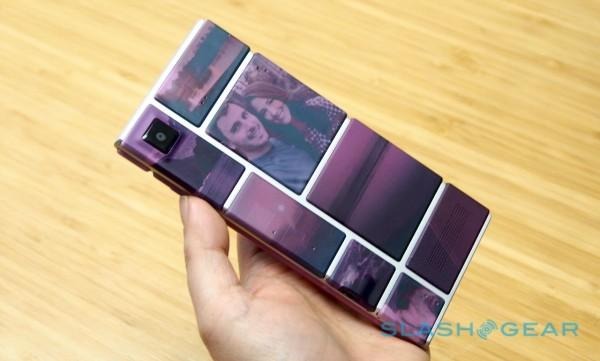
There's no front camera, either, the module above the display having light and proximity sensors but no way to take part in video calls. Admittedly you could switch them around, but it's not something you'd want to be doing on-the-fly while an incoming Skype video call was ringing.
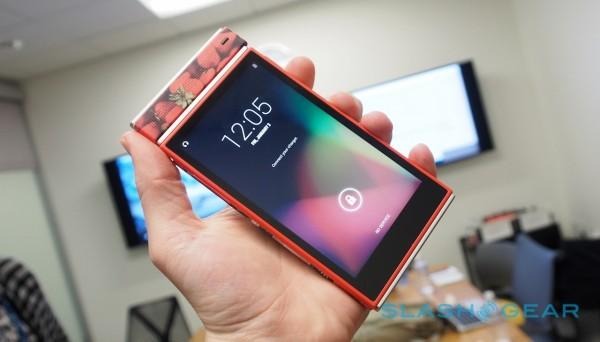
What Google isn't particularly keen to show anybody is Ara actually in action. We weren't allowed to go any further than the Android lock-screen, and touch wasn't even working on these three particular units. Apparently that's been corrected – last night, in fact – but the new firmware hadn't been flashed yet.
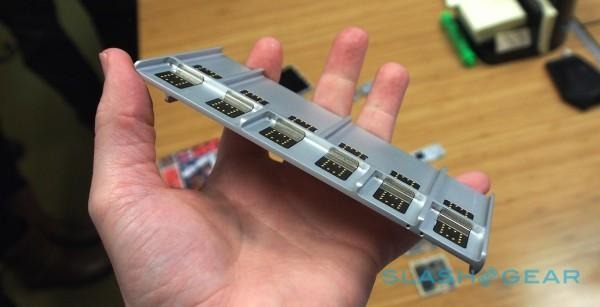
Google has had to postpone custom 3D printing of module casings, because the 3D Systems printer tech isn't quite ready for primetime. Instead, there'll be dye-sublimation printed blocks, made by IDT Systems, with 300dpi detail. They look great, too: matte finish and very bright.
It's too early to talk about whether interchangeable modules makes Project Ara more long-lasting or user-friendly than a traditional phone. Android hasn't even been updated to support it properly, and Google is still working on both hardware and software so that things like installing apps with particular component requirements doesn't trigger a metaphorical meltdown.
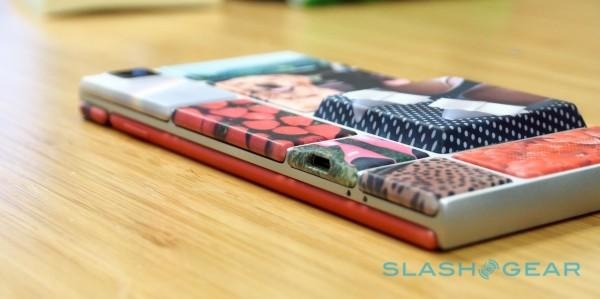
I'm still intrigued, though it'll take proper pricing and actually living with Ara before I can be sure Google is on the right track. Still, as with many of the company's more ambitious or off-kilter projects, I'm glad there's someone out there actually experimenting with something out of the ordinary.

